The Absolute Guide to Buying a Snowboard

The Absolute Guide to how to buy a snowboard has been developed over many years by our team of expert riders, buyers and shop staff.
As the UK's No.1 independent snowboard retailer, we know a thing or two about snowboards and are happy to share our expert knowledge with you. Buying a snowboard need not be daunting, follow our advice and you will not go wrong!
If you're still unsure, don't forget that we can Recommend A Snowboard or please feel free to Contact Us at any time - we're here to help.
The ideal snowboard length varies depending the type of your weight, your height and the type of snowboarding you are into. Height is used by rental shops as a quick way to pick a board which will be 'about right' for you however the size and type of board you get will often not be perfect for you. If you are investing your hard earned money in a new setup we recommend using your body weight first, then height second to choose the right size snowboard. Your first step however should be to think about the type of rider you are and where you are looking to ride.
Snowboards designed for jibbing or freestyle will differ in size to those for backcountry. Click the tables below to check the ideal snowboard size for you.
Women's specific snowboards are designed to suit female builds by utilising softer flex patterns and thinner waist widths. It is important to choose a female specific board if you are petite or if you have feet smaller than a UK7. Taller or heavier women can ride a men's or unisex board but generally speaking it is a good idea to stick to a women's specific model. Brands these days cater for such a wide range of riders that we are bound to stock something suitable for you! Use the table below to pick the ideal size for you.
Downsize a few centimetres for freestyle riding or go up a few centimetres if you want to freeride (backcountry/powder).
Check out our full range of Women's Snowboards today!
Women Specific Snowboard Size Chart
| kg | <49 | 50-59 | 60-69 | 70-79 | 80-89 | 90-95 | 95+ | |
|---|---|---|---|---|---|---|---|---|
| stone | < 7 | 7.1-9.4 | 9.5-10 | 10-12.5 | 12.6-14 | 14.1-15 | 15.1+ | |
| ft | cm/lbs | < 108 | 108-130 | 131-152 | 153-174 | 175-196 | 197-209 | 210+ |
| < 5' | <152 | 146-148 | 147-149 | 150-152 | 152-154 | 154-156 | 156-158 | 158-160 |
| 5'1-5'6 | 154-168 | 147-149 | 148-150 | 151-153 | 154-156 | 155-157 | 158-160 | 159-161 |
| 5'7-6'0 | 168-182 | 148-150 | 150-152 | 152-154 | 155-157 | 156-158 | 159-161 | 160-162 |
| 6'1-6'5 | 182-195 | 150-152 | 151-153 | 154-156 | 156-158 | 158-160 | 160-162 | 162-164 |
| 6'6+ | 195+ | 151-153 | 152-154 | 155-157 | 158-160 | 159-161 | 162-164 | 165+ |
Explore some of our women's snowboards
This may be your first time snowboarding, or you may have taken a few lessons and are looking forward to your first trip away. Or maybe you have been renting and are finally looking to buy your very first set-up. Either way you are going to want a snowboard which will help you progress quickly and efficiently, without holding you back. These snowboards feature easy to ride shapes and are extremely versatile in any situation, without being too specific to any style of riding. They also tend to be tougher and more durable than some of the more expensive and more specialised snowboards, so you can learn without melting your wallet!
All of these boards will last you right into intermediate and advanced territory, so don't worry about out growing them too quickly.
Check out our full range of Beginner Snowboards today!
Beginner/Intermediate Snowboard Size Chart
| kg | <49 | 50-59 | 60-69 | 70-79 | 80-89 | 90-95 | 95+ | |
|---|---|---|---|---|---|---|---|---|
| stone | < 7 | 7.1-9.4 | 9.5-10 | 10-12.5 | 12.6-14 | 14.1-15 | 15.1+ | |
| ft | cm/lbs | < 108 | 108-130 | 131-152 | 153-174 | 175-196 | 197-209 | 210+ |
| < 5' | <152 | 146-148 | 147-149 | 150-152 | 153-155 | 154-156 | 157-159 | 158-160 |
| 5'1-5'6 | 154-168 | 147-149 | 149-151 | 151-153 | 154-156 | 155-157 | 158-160 | 159-161 |
| 5'7-6'0 | 168-182 | 148-150 | 150-152 | 153-155 | 155-157 | 157-159 | 159-161 | 162+ |
| 6'1-6'5 | 182-195 | 150-152 | 151-153 | 154-156 | 157-159 | 158-160 | 161-163 | 163+ |
| 6'6+ | 195+ | 151-153 | 153-155 | 155-157 | 158-160 | 159-161 | 162-164 | 164+ |
Explore some of our beginner / intermediate boards - great for progression
Rails, jibs, boxes, presses, snow domes, stair sets and freestyle is what you're all about. These boards tend to be shorter and feature a true-twin tip shape with a centred stance, for riding both switch and regular. These boards are also a lot softer, flexible and more forgiving than other types of snowboards making them loose and fun for freestyle tricks. A lot of these boards feel like skateboards on snow.
Jib specific boards sometimes feature specialist constructions like durable edges to stop hook ups on man made features.
Check out our full range of Freestyle Snowboards today!
Freestyle - Jib & Street Snowboard Size Chart
| kg | <49 | 50-59 | 60-69 | 70-79 | 80-89 | 90-95 | 95+ | |
|---|---|---|---|---|---|---|---|---|
| stone | < 7 | 7.1-9.4 | 9.5-10 | 10-12.5 | 12.6-14 | 14.1-15 | 15.1+ | |
| ft | cm/lbs | < 108 | 108-130 | 131-152 | 153-174 | 175-196 | 197-209 | 210+ |
| < 5' | <152 | 145-147 | 146-148 | 149-151 | 151-153 | 153-155 | 155-157 | 158-160 |
| 5'1-5'6 | 154-168 | 146-148 | 147-149 | 150-152 | 153-155 | 154-156 | 157-159 | 159-161 |
| 5'7-6'0 | 168-182 | 147-149 | 149-151 | 151-153 | 154-156 | 155-157 | 158-160 | 162-164 |
| 6'1-6'5 | 182-195 | 149-151 | 150-152 | 153-155 | 155-157 | 157-159 | 159-161 | 162-164 |
| 6'6+ | 195+ | 150-152 | 151-153 | 154-156 | 157-159 | 158-160 | 161-163 | 164-166 |
Explore some of our freestyle snowboards
You want to sample it all. From cruising groomed slopes, hitting the park or riding powder these boards will be versatile in any situation. All mountain snowboards are a bit of a hybrid between freeride and freestyle boards.
They may well abandon some freestyle features such as twin-tip shapes, symmetrical side cuts, centred stances or softer flex patterns. Instead, they adopt some of the characteristics more associated with freeride boards such as directional shapes and side cuts, set back stances, sharper or more tuned edges and stiffer core profiles. This basically means you are going to get a board that will take you everywhere and do everything without being too specific to one area.
All mountain boards will also be good for beginners as they are easy to progress on and will land you right in intermediate territory.
Check out our full range of All Mountain Snowboards today!
All Mountain Snowboard Size Chart
| kg | <49 | 50-59 | 60-69 | 70-79 | 80-89 | 90-95 | 95+ | |
|---|---|---|---|---|---|---|---|---|
| stone | < 7 | 7.1-9.4 | 9.5-10 | 10-12.5 | 12.6-14 | 14.1-15 | 15.1+ | |
| ft | cm/lbs | < 108 | 108-130 | 131-152 | 153-174 | 175-196 | 197-209 | 210+ |
| < 5' | <152 | 148-150 | 150-152 | 152-154 | 155-157 | 156-158 | 159-161 | 160-162 |
| 5'1-5'6 | 154-168 | 150-152 | 151-153 | 154-156 | 156-158 | 158-160 | 160-162 | 162-164 |
| 5'7-6'0 | 168-182 | 151-153 | 152-154 | 156-158 | 158-160 | 159-161 | 162-164 | 163+ |
| 6'1-6'5 | 182-195 | 152-154 | 154-156 | 157-159 | 159-161 | 160-162 | 163-165 | 165+ |
| 6'6+ | 195+ | 154-156 | 155-157 | 158-160 | 160-162 | 162-164 | 165+ | 166+ |
Explore some of our all mountain snowboards
Parks, jumps, kickers, spins, grabs, rails, air and fun is where your snowboarding is at. These snowboards tend to feature centred stances and twin-tip shapes for making spins and rails easier and riding both switch and regular. They are versatile and fun anywhere you want to take them. These boards will hold their edge better at speed than the jib boards due to slightly stiffer flex patterns, but they are more specifically designed for having fun everywhere than charging the slopes. They generally have softer flex patterns and are nice and forgiving on landings.
These characteristics also makes these boards great for beginner riders as they are easy to progress on.
Check out our full range of Freestyle Snowboards today!
Freestyle - Park & Pipe Snowboard Size Chart
| kg | <49 | 50-59 | 60-69 | 70-79 | 80-89 | 90-95 | 95+ | |
|---|---|---|---|---|---|---|---|---|
| stone | < 7 | 7.1-9.4 | 9.5-10 | 10-12.5 | 12.6-14 | 14.1-15 | 15.1+ | |
| ft | cm/lbs | < 108 | 108-130 | 131-152 | 153-174 | 175-196 | 197-209 | 210+ |
| < 5' | <152 | 146-148 | 148-150 | 150-152 | 153-155 | 154-156 | 157-159 | 158-160 |
| 5'1-5'6 | 154-168 | 148-150 | 149-151 | 152-154 | 154-156 | 156-158 | 158-160 | 160-162 |
| 5'7-6'0 | 168-182 | 149-151 | 150-152 | 154-156 | 156-158 | 157-159 | 160-162 | 161+ |
| 6'1-6'5 | 182-195 | 150-152 | 152-154 | 155-157 | 157-159 | 158-160 | 161-163 | 163+ |
| 6'6+ | 195+ | 152-154 | 153-155 | 156-158 | 158-160 | 160-162 | 163+ | 164+ |
Explore some of our freestyle snowboards
These boards are born for powder riding. Specialist snowboards for big mountain adventures, these really are not for the faint hearted! Bindings tend to be set well back on the board to minimise back leg burn. The nose rocker is usually slightly more extreme to prevent your nose from dipping or sinking. The surface area of the nose will usually be more than on most other boards to encourage float in softer snow. These boards are often slightly wider in the nose and narrower in the tail for the same reason.
Some of these boards will also feature a swallow tail or tapered tail shape, which allows the rear of the board to sink in powder, helping to lift the nose even more. Stiffer flex characteristics are also important as they give you more control in soft snow. These boards can be hard to size so please use the chart below as a guide. You may need to use the specific descriptions of each board to make an informed decision on what size is correct for you.
Check out our full range of Big Mountain Snowboards today!
Big Mountain Snowboard Size Chart
| kg | <49 | 50-59 | 60-69 | 70-79 | 80-89 | 90-95 | 95+ | |
|---|---|---|---|---|---|---|---|---|
| stone | < 7 | 7.1-9.4 | 9.5-10 | 10-12.5 | 12.6-14 | 14.1-15 | 15.1+ | |
| ft | cm/lbs | < 108 | 108-130 | 131-152 | 153-174 | 175-196 | 197-209 | 210+ |
| < 5' | <152 | 150-152 | 152-154 | 154-156 | 156-158 | 158-160 | 160-162 | 162-164 |
| 5'1-5'6 | 154-168 | 152-154 | 153-155 | 156-158 | 158+ | 159+ | 162+ | 163+ |
| 5'7-6'0 | 168-182 | 153-156 | 153-156 | 158-160 | 159+ | 160+ | 163+ | 164+ |
| 6'1-6'5 | 182-195 | 154-157 | 156-158 | 159-161 | 160+ | 162+ | 164+ | 165+ |
| 6'6+ | 195+ | 156-159 | 157-159 | 160-162 | 162+ | 164+ | 165+ | 166+ |
Explore some of our big mountain snowboards
Charging groomers, riding powder and covering the entire resort as quickly as possible is why freeriding is so much fun! Freeride snowboards are some of the stiffest boards available allowing them to handle high speeds and long, exhilarating carves with ease. These boards usually feature a set back stance, directional sidecut and directional flex pattern which allow the board to perform well when travelling flat out. Some freeride boards also feature a tapered shape which means the nose is slightly wider than the tail. This shape promotes greater float in powder and eliminates back leg burn.
Check out our full range of Freeride Snowboards today!
Freeride Snowboard Size Chart
| kg | <49 | 50-59 | 60-69 | 70-79 | 80-89 | 90-95 | 95+ | |
|---|---|---|---|---|---|---|---|---|
| stone | < 7 | 7.1-9.4 | 9.5-10 | 10-12.5 | 12.6-14 | 14.1-15 | 15.1+ | |
| ft | cm/lbs | < 108 | 108-130 | 131-152 | 153-174 | 175-196 | 197-209 | 210+ |
| < 5' | <152 | 150-152 | 152-154 | 154-156 | 156-158 | 158-160 | 160-162 | 162-164 |
| 5'1-5'6 | 154-168 | 152-154 | 153-155 | 156-158 | 158+ | 159+ | 162+ | 163+ |
| 5'7-6'0 | 168-182 | 153-156 | 153-156 | 158-160 | 159+ | 160+ | 163+ | 164+ |
| 6'1-6'5 | 182-195 | 154-157 | 156-158 | 159-161 | 160+ | 162+ | 164+ | 165+ |
| 6'6+ | 195+ | 156-159 | 157-159 | 160-162 | 162+ | 164+ | 165+ | 166+ |
Explore Some of our freeride snowboards
If you have particularly large or particularly small feet then you need to consider the width of your snowboard. Pick a board which is too narrow and you could end up catching your toes or heels in the snow making it tricky to control your board. Pick a board which is too wide and you could find it difficult to initiate your turns or to make snappy edge to edge transitions. If your feet are average for your height then snowboard width tends not to be an issue.
| Boot Size | Board Width | |
|---|---|---|
| Minimum | Maximum | |
| UK 2 | 20.5 cm | 22.5 cm |
| UK 3 | 21.0 cm | 23.0 cm |
| UK 4 | 21.5 cm | 23.5 cm |
| UK 5 | 22.0 cm | 24.0 cm |
| UK 6 | 22.5 cm | 24.5 cm |
| UK 7 | 23.0 cm | 25.0 cm |
| UK 8 | 23.5 cm | 25.5 cm |
| UK 9 | 24.0 cm | 26.0 cm |
| UK 10 | 24.5 cm | 26.5 cm |
| UK 11 | 25.0 cm | 27.0 cm |
| UK 12 | 25.5 cm | No Max |
| UK 13 | 26.0 cm | No Max |
| UK 14 | 26.5 cm | No Max |
| Board Width | Suitable For UK boot Size |
|---|---|
| 20.5 cm | C11 - 2 |
| 21.0 cm | C12 - 3 |
| 21.5 cm | C13 - 4 |
| 22.0 cm | 1 - 5 |
| 22.5 cm | 2 - 6 |
| 23.0 cm | 3 - 7 |
| 23.5 cm | 4 - 8 |
| 24.0 cm | 5 - 9 |
| 24.5 cm | 6 - 10 |
| 25.0 cm | 7 - 11 |
| 25.5 cm | 8 - 12 |
| 26.0 cm | 9 - 13 |
| 26.5 cm | 10 - 14 |
| 27.0 cm | 11 - 15 |
Yes! A small amount of overhang of both your heels and toes is needed to ensure easy edge to edge transitions. To determine if your board is set-up correctly the image below can be used as a reference.
A general rule of thumb is up to 1 inch of boot overhang at the toe and the heel is ok. Any more, or if the binding baseplate is overhanging then you need to look for a wider board.

Reduced Footprint Boots - For Riders With Big Feet
If you have large feet over a UK 11 then you will need to consider a wide style snowboard to prevent your toes and heels from dragging in the snow when leaning over hard in the turns. One option is to purchase a pair of footprint reducing snowboard boots. These boots downsize your footprint by up to 1.5 sizes meaning a UK 12 would have the footprint of a UK 10.5. This opens up a much wider choice of snowboards available to you.
Explore Some of Our Wide Snowboards
Camber profile is the curvature of the base a snowboard from the tip to the tail. Manufacturers produce a wide variety of camber profiles for different styles of riding. If you are into cruising around the pistes or riding pipe we recommend a traditional positive camber snowboard. For off piste and freestyle riding we would recommend rockered or hybrid profiles. Every brand does their camber profiles slightly differently, so this guide summarises the main options.
This traditional camber profile is best for all mountain cruising and more aggressive freestyle riding. Positive camber offers the best turn initiation, energy transfer and stability on landings. You also get superior pop compared to other profiles as energy is pre built into the profile of the snowboard. As Rome say, "Keep the king of pop alive!"

Loose, easy to turn and extremely forgiving, these profiles are great for complete beginners, free riding or hitting rails.
Reverse camber is just as it sounds - camber turned upside down. The board bends up from the centre to tip and tail. Reverse camber offers a more skate like feel on freestyle or jib specific boards and superior float when riding deep powder. These boards are not always great for all mountain riding as they lose some edge hold at speed, however brands like Smokin, Slash, Lib-Tech, Arbor and Rossignol counteract this by adding extra features to the sidecut of the snowboard to increase grip.

These boards are catch free but still deliver a ton of energy and pop for more freestyle orientated snowboarding. Flat camber profiles is usually found on more freestyle orientated snowboards. This profile is completely flat from the contact points at the tip and tail and all the way through the board. This gives a loose, catch free feel when in the park but also delivers a ton of pop when you want it. The only curved sections of these boards are the tip and tail.

Aiming to deliver the best of both worlds, hybrid camber snowboards combine positive camber and reverse camber profiles in a single profile.
The combination of these two profile shapes is different for each brand. There are lots of variations from brand to brand but one of the most popular profiles gives you reverse camber between the bindings for a loose, manoeuvrable ride and positive camber from the bindings to the contact points for grip and control. This combination delivers a loose and catch free ride at slow speeds but is still stable and controlled at high speeds or landing off jumps.

3D camber snowboards raise the contact points along a boards edge to create a more catch free ride but without sacrificing edge hold. These boards also promote float in powder and make it easy to turn. There are many different 3D cambers on the market - some use a raised edges (blue area illustrated below), while some will use a spoon shape on the base of the board.
They also use different camber profiles in conjunction with this technology, so it is worth doing your research before committing to a brand or model. Bataleon were the first brand to use 3D base technology with their Triple Base design.

Shape refers to the plan or aerial view of the snowboard's deck looking down on it from above. An important aspect of a board's shape is its side cut - or the depth and shape of its waist.
A twin tip snowboard is symmetrical, with an identical shape at the nose and tail. This makes them easy to ride switch or regular (in either direction) and are perfect for more freestyle orientated styles of snowboarding. A twin tip would be a good choice for your first snowboard because it is important to learn how to ride well with either your left or right foot forward.

These boards are identical in shape to twin tip snowboards and are designed to be ridden both switch and regular however the constructions of the board will be different because these boards offer a directional flex pattern often with a slightly softer nose. This makes landing in powder and all mountain cruising easier but still keeps a more freestyle feel through the board. This makes them perfect for all mountain and freestyle or park riders.

At a glace, these boards look the same as twin tip boards, however their shapes are not the same. The waist of a directional board will be set back from the mid point of the board, making the nose area larger to prevent sinking and promote float in powder. The shorter tail area also makes carving hard, fast turns easier and more stable. These boards also feature directional flex patterns to give you more power on piste from the tail of your board and more float when cruising through cruddy snow or powder. This makes them perfect for all mountain cruising and freeride styles.

Directional tapered snowboards are more specialised than directional boards. They have a much wider nose than tail enabling the nose to rise up and the tail to sink when you're in deep powder. Each manufacturer offers a different take on tapered shapes so make sure you know what you're buying. Tapered boards are usually fairly specialist to powder or on piste cruising and are not as easy to ride switch.

Swallowtail snowboards are extremely specialist and are designed for riding deep powder. They feature a wider nose much like a directional tapered snowboard but these powder monsters have a section cut out of the tail in order to completely sink the back in the deepest powder.
If you're going heli-boarding or are just obsessed with finding the best powder then one of these will be your perfect companion. Swallowtail shapes vary between brands with some having more extreme and specialist shapes than others. It is therefore important to fully research these shapes before committing to a purchase.

Snowboard bases can come in different constructions. You may see different grades or names used from each brand, however each one will fall into one of 4 types as seen below.
Extruded bases are constructed from a single sheet of p-tex which is forced through a mould in the shape of the snowboard. This creates a single sheet of base material which is then glued to the core of the snowboard. Extruded bases are extremely easy to maintain if they take any damage which is why they are generally found on entry and intermediate level boards and park or freestyle specific boards.
Extruded bases are also cheaper than other base types making them the material of choice for cheaper snowboards.
Also known as Sintruded, Extrintered, Impact and many more - every brand names these something different. These bases use the same construction method as extruded bases however the p-tex is a much higher grade than standard extruded bases. In order to increase the base grade they are usually infused with another chemicals such as graphite to make them harder or more durable.
Sintered bases are the premium end of snowboard base constructions. Instead of being press formed (extruded), the p-tex is ground to a fine powder which is then heated and compressed onto the snowboard core. Sintered bases are much more durable, faster and hold wax much more efficiently giving you a faster ride. Unfortunately you do pay more for this type of construction but its well worth it.
Sintered hybrid bases are the most expensive snowboard bases available. These bases are manufactured in the exact same way as standard sintered bases, however the p-tex is mixed with friction reducing additives such as carbon or graphite to create bases that are lightning fast and super durable.
Check out our latest snowboards
Check out our full range of Snowboards today!
Need further advice? We're here to help!
Check out our Buying Guides for technical tips and tricks.
Visit our Help Centre to speak to our experts

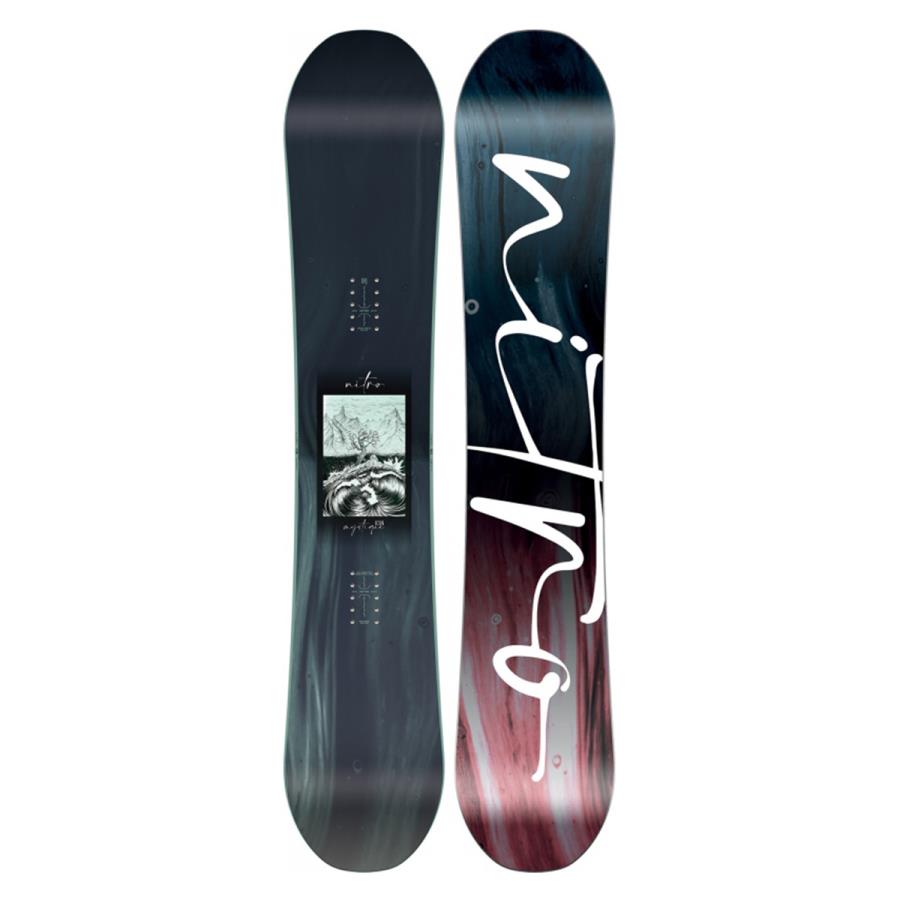
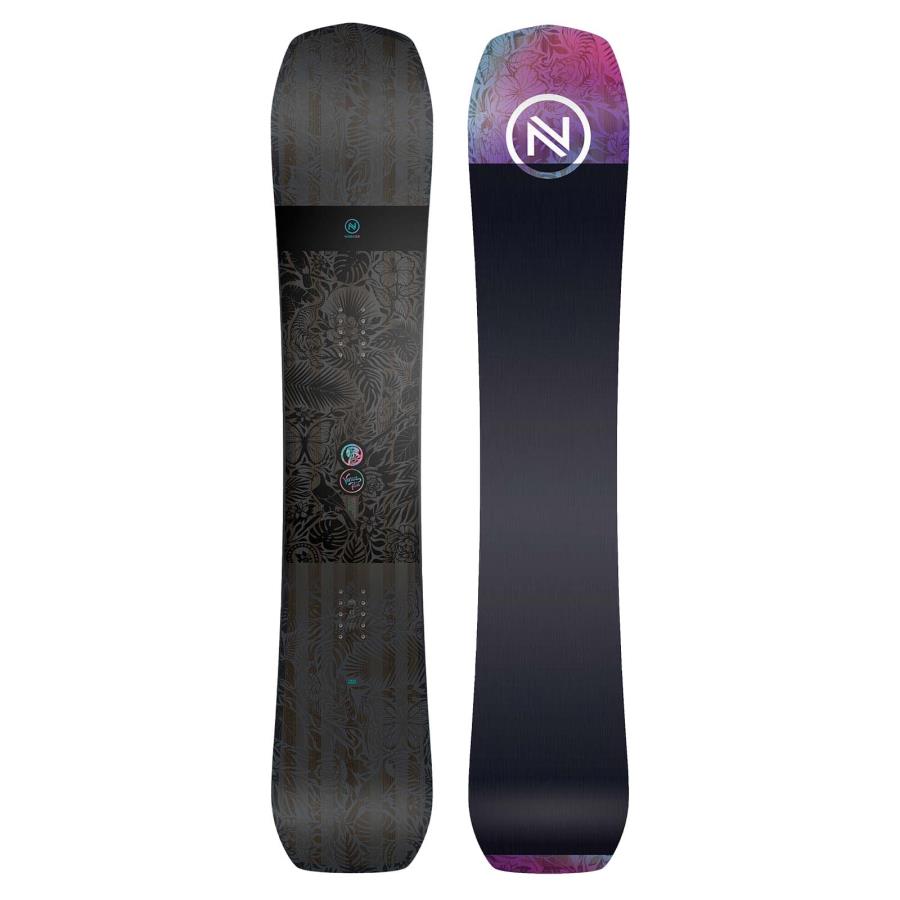
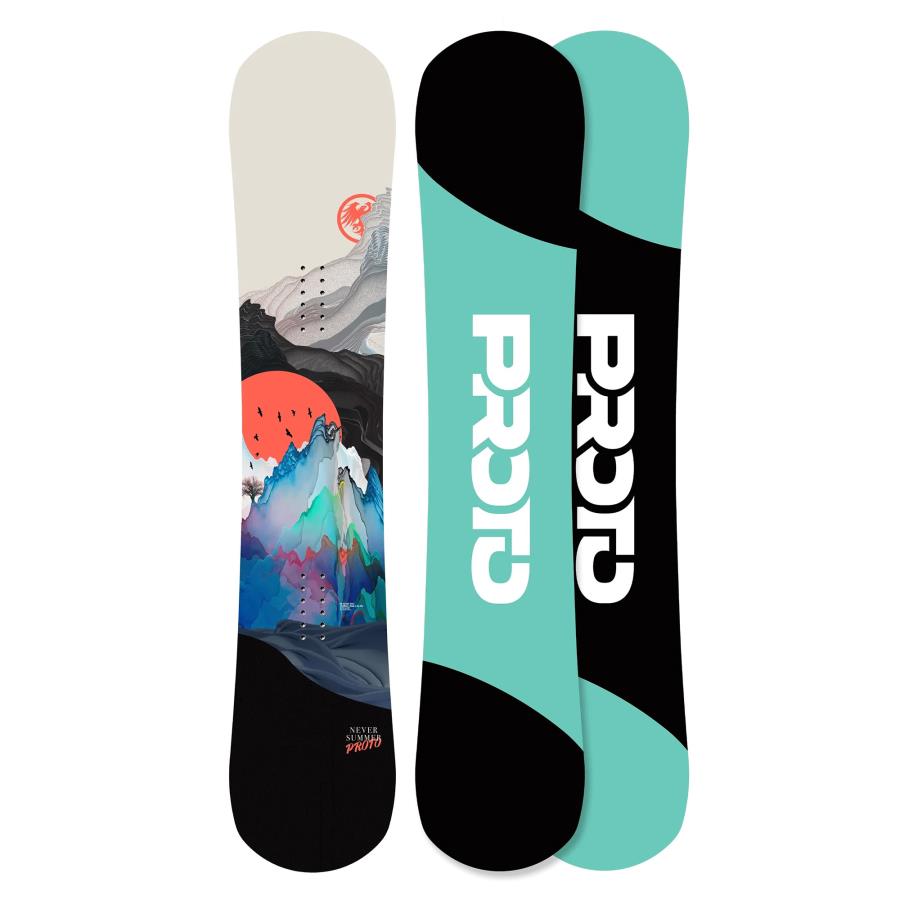
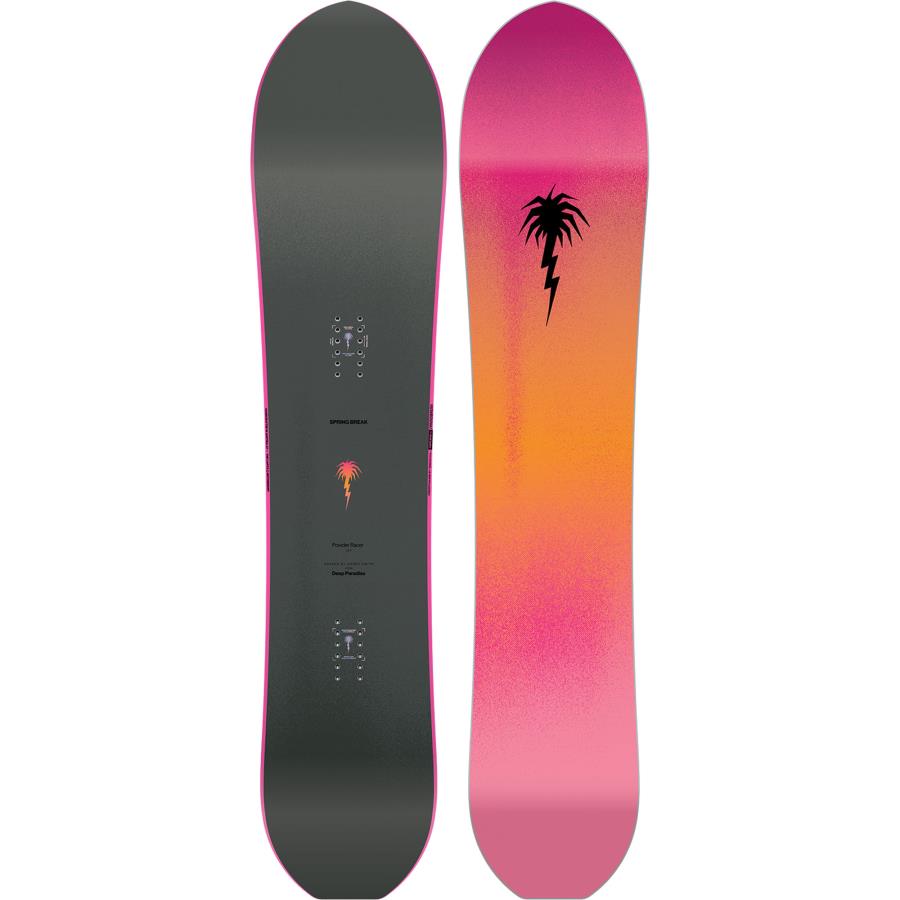
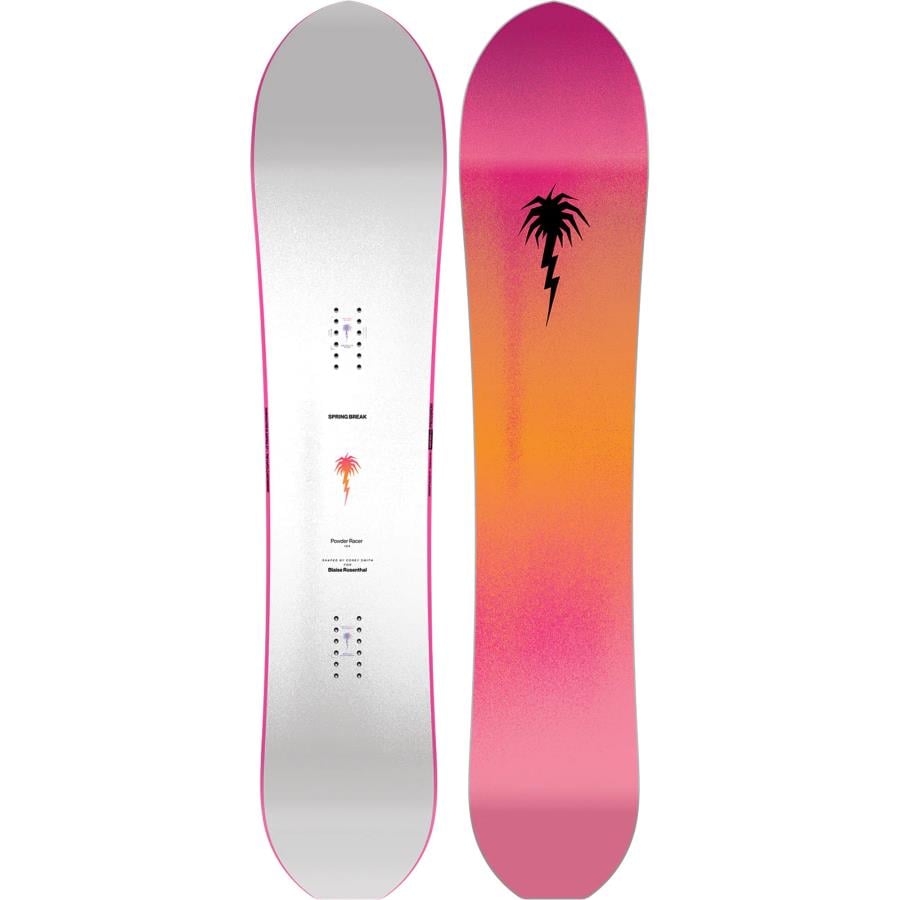
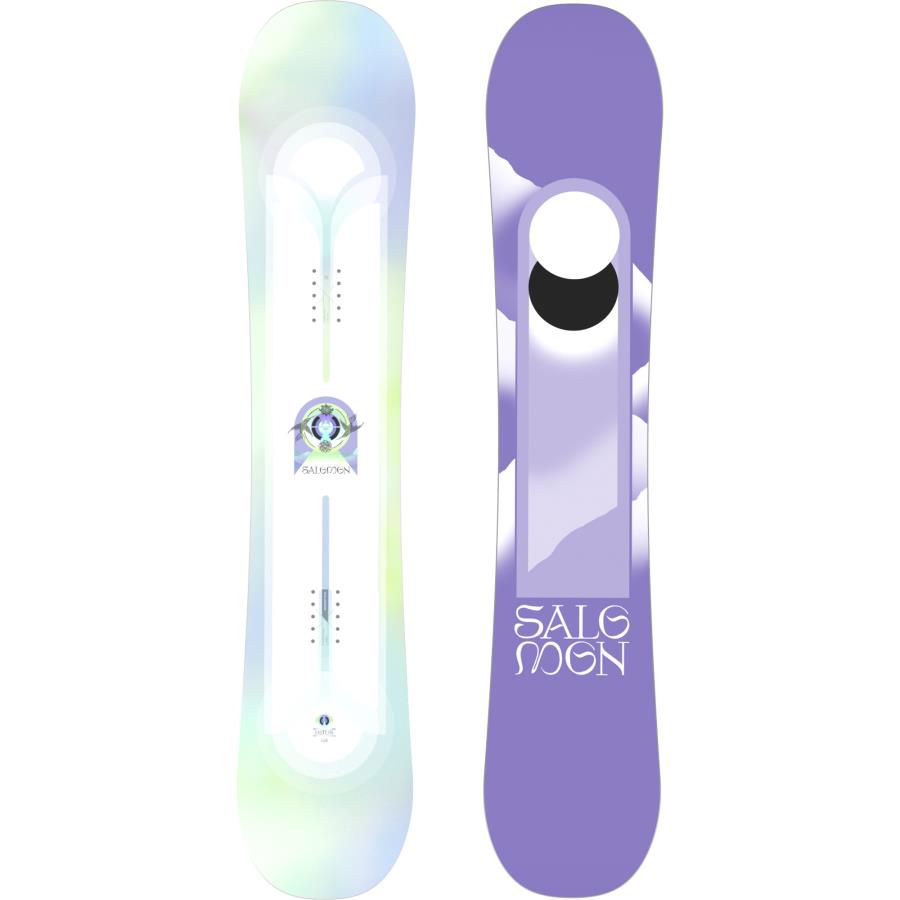


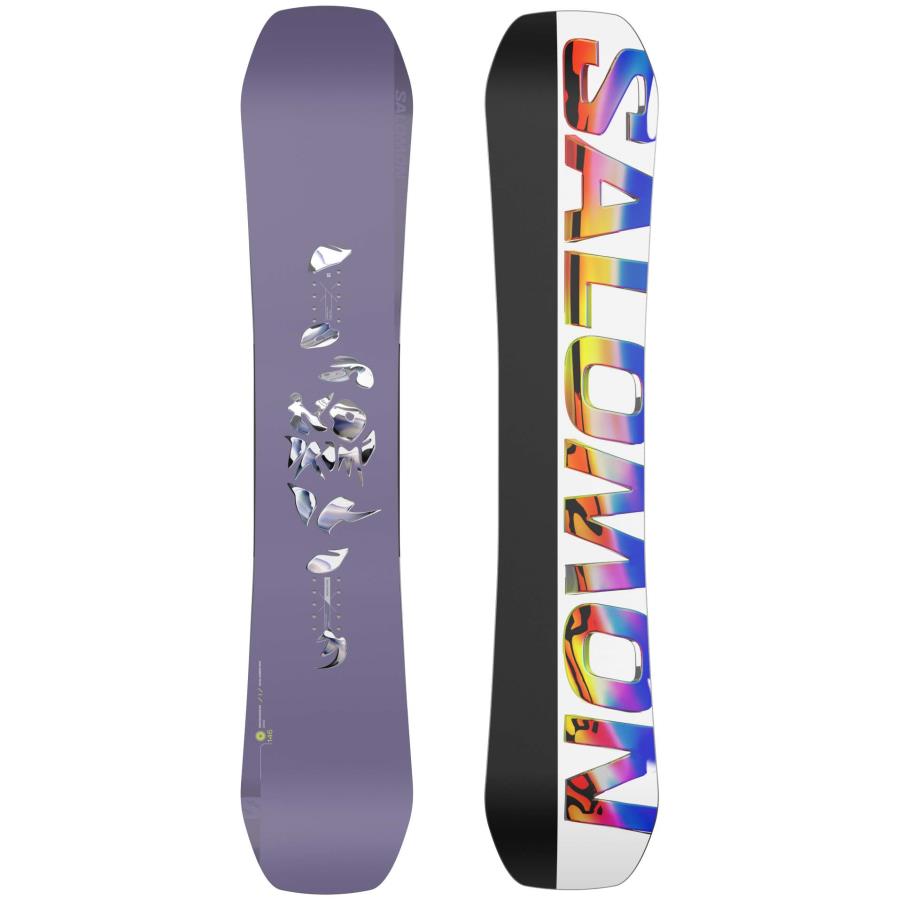
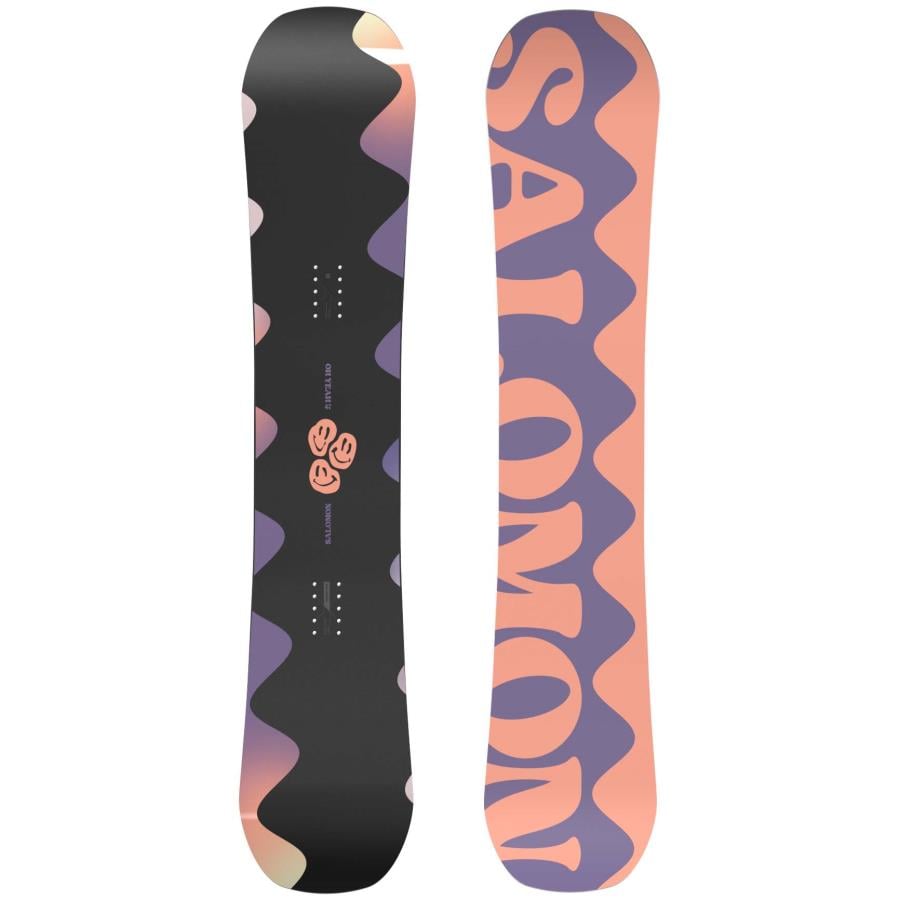
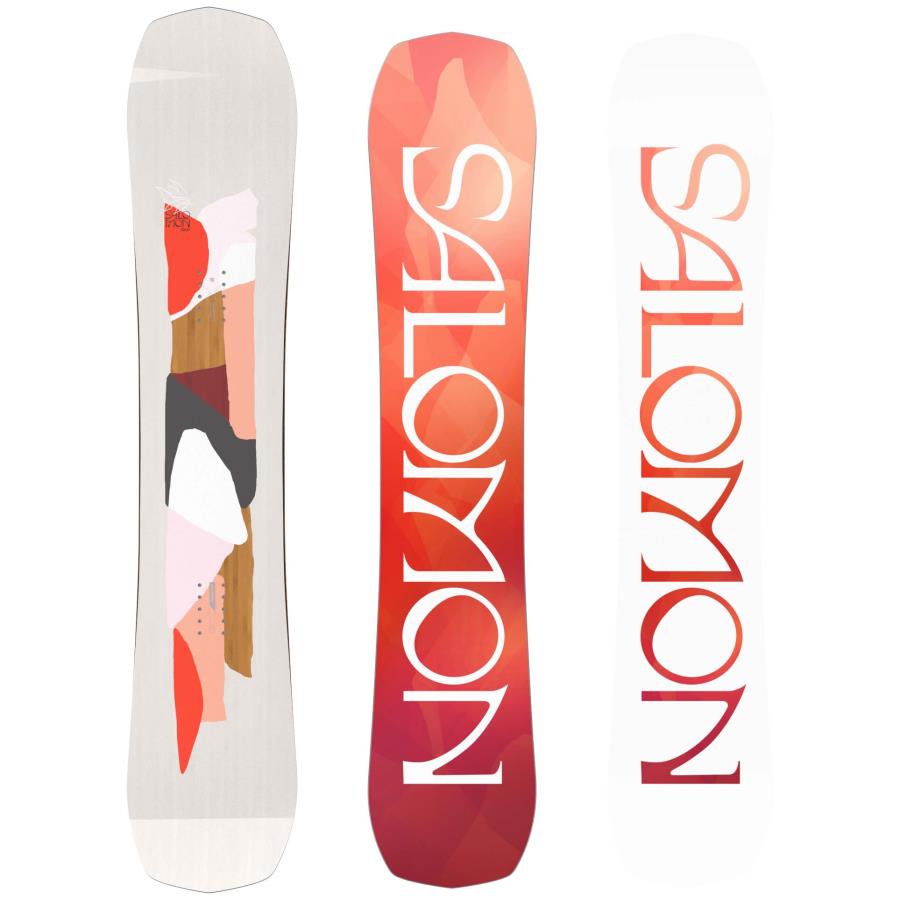

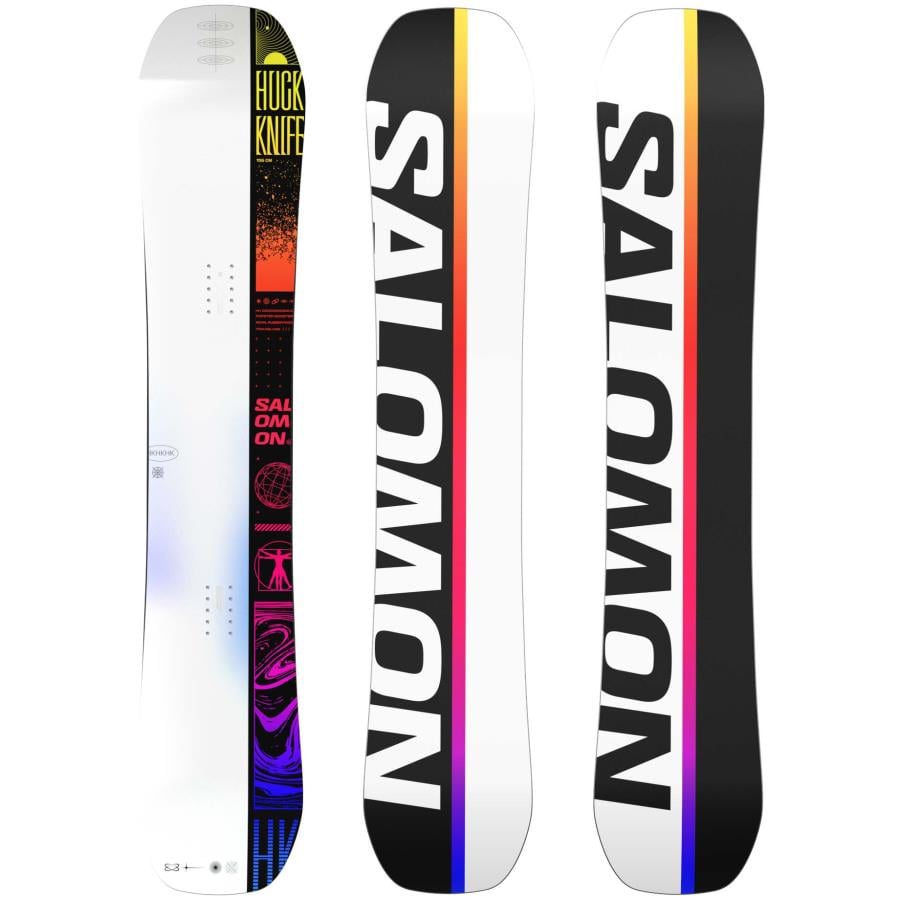
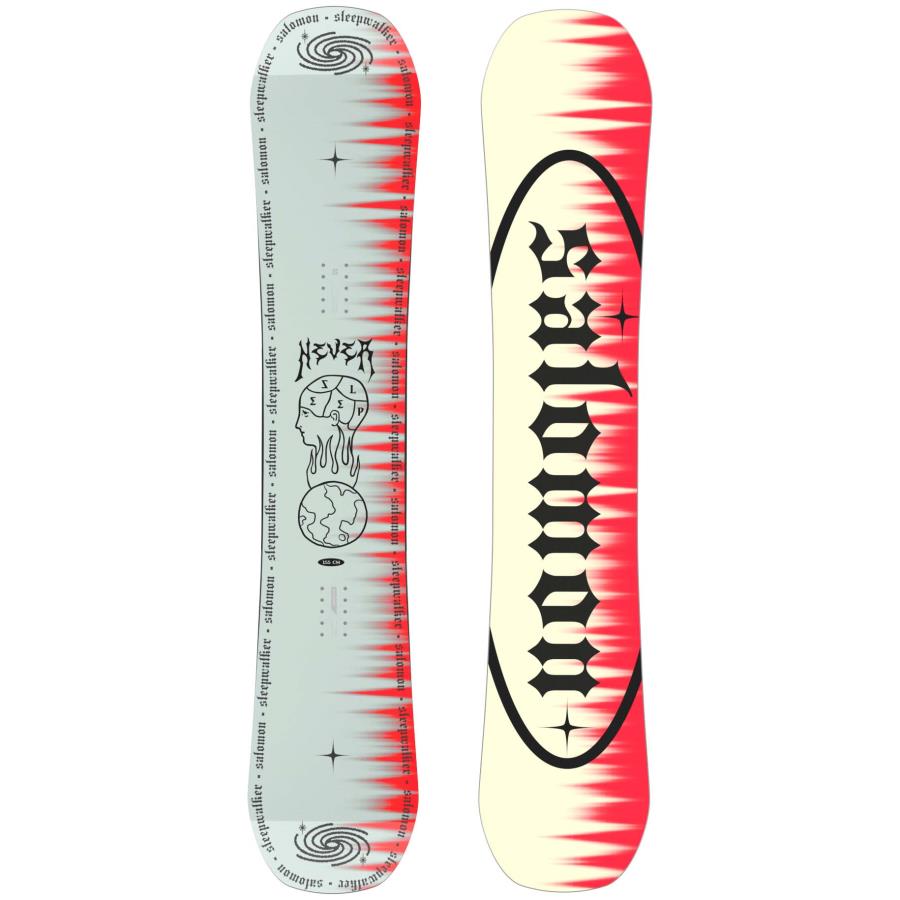
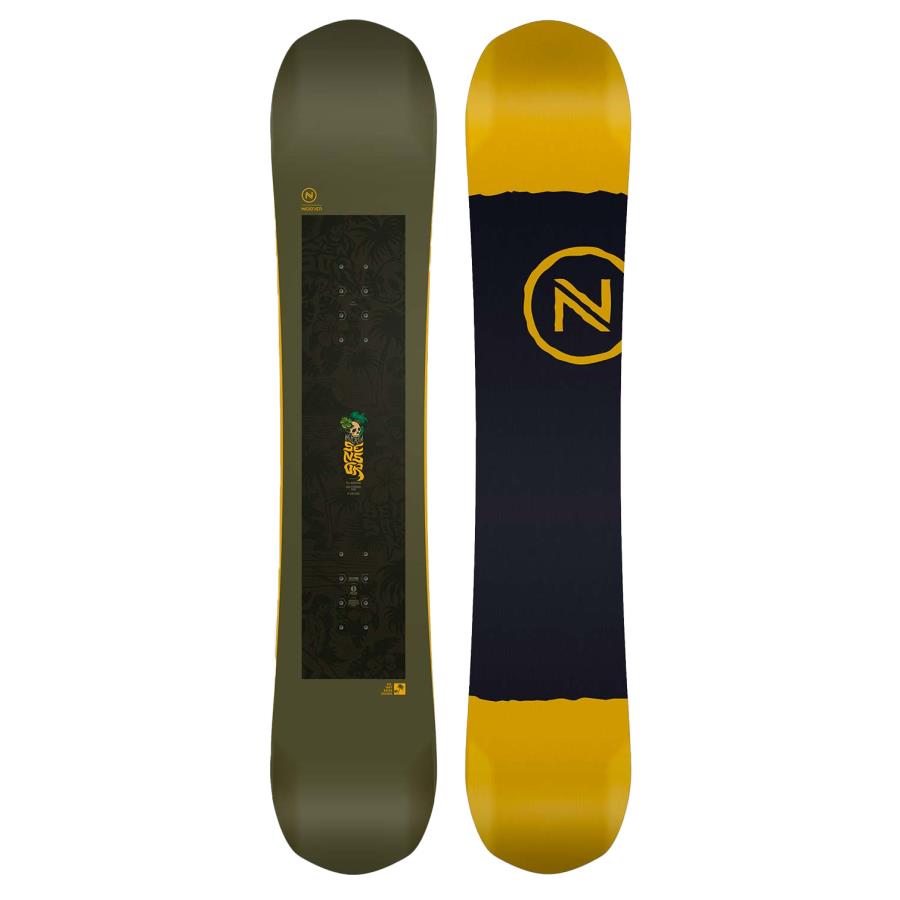
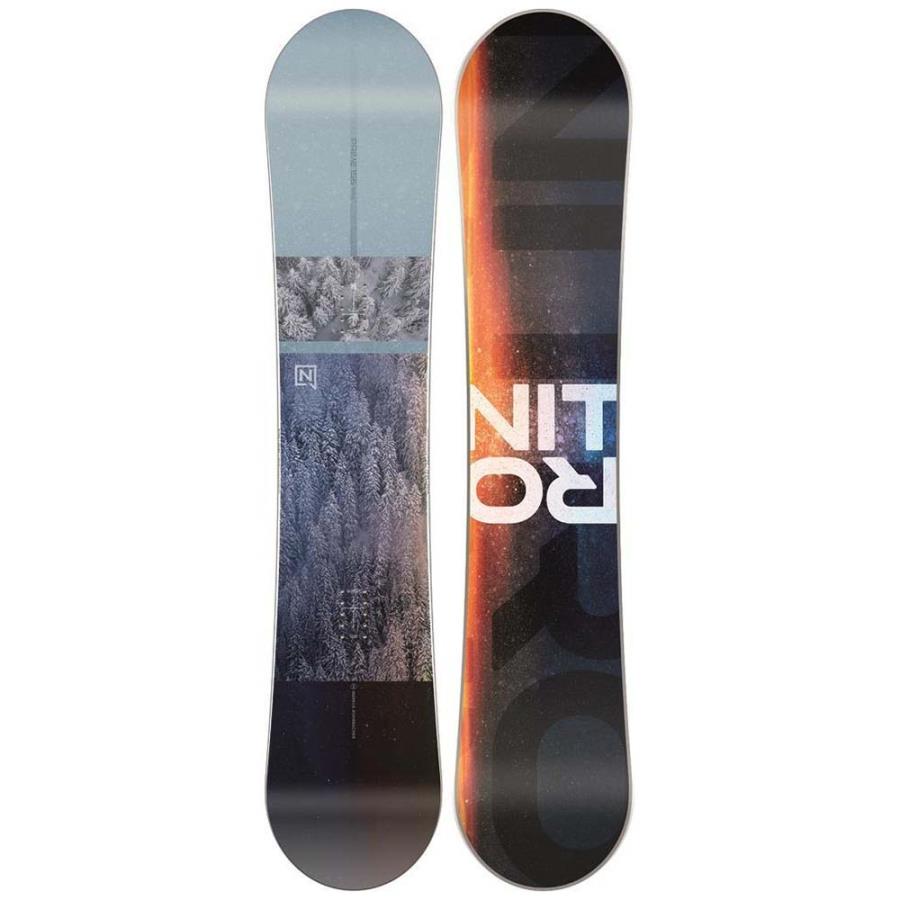
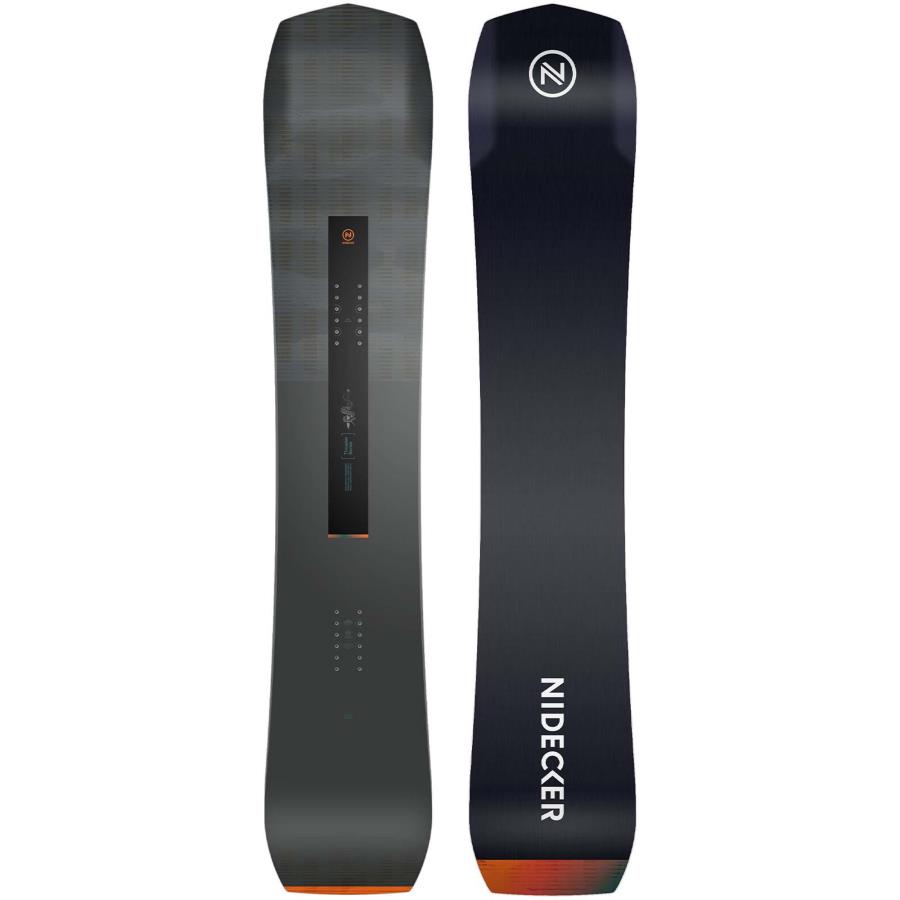
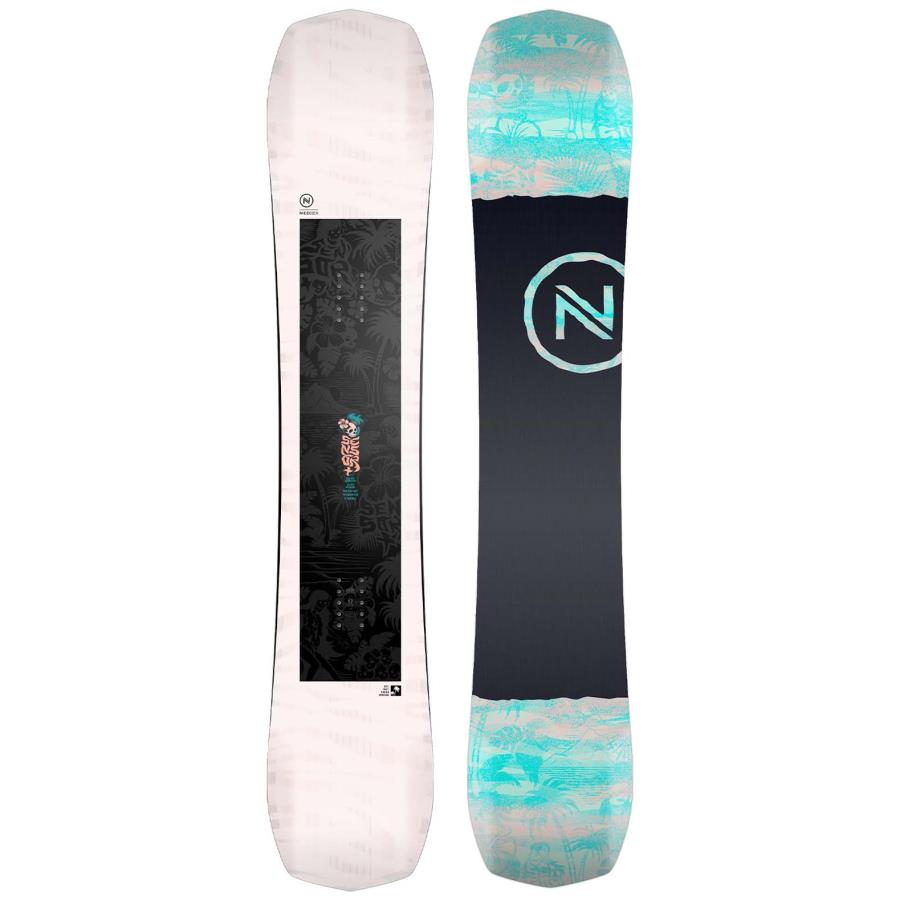
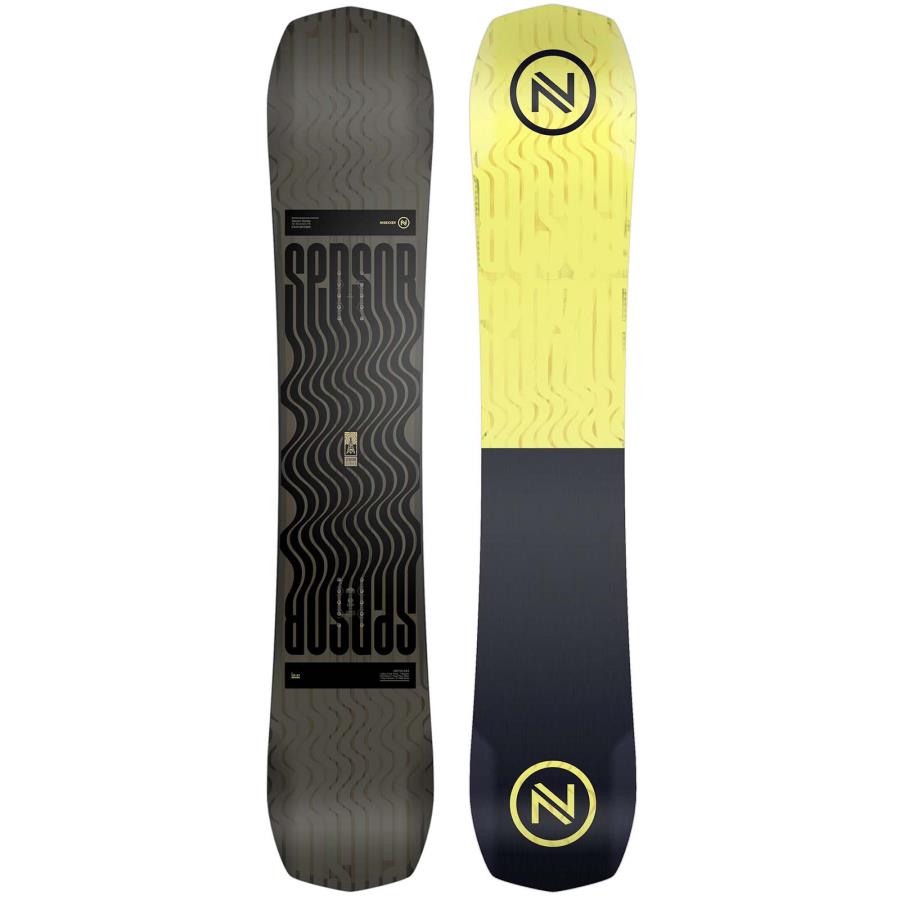




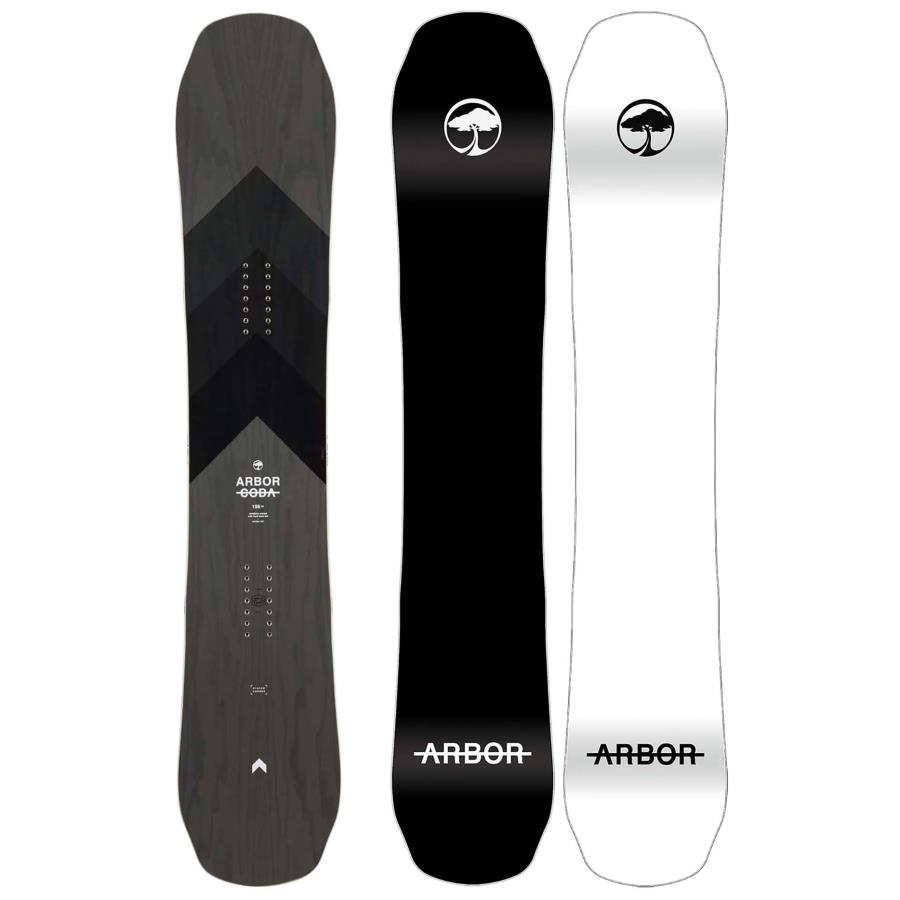
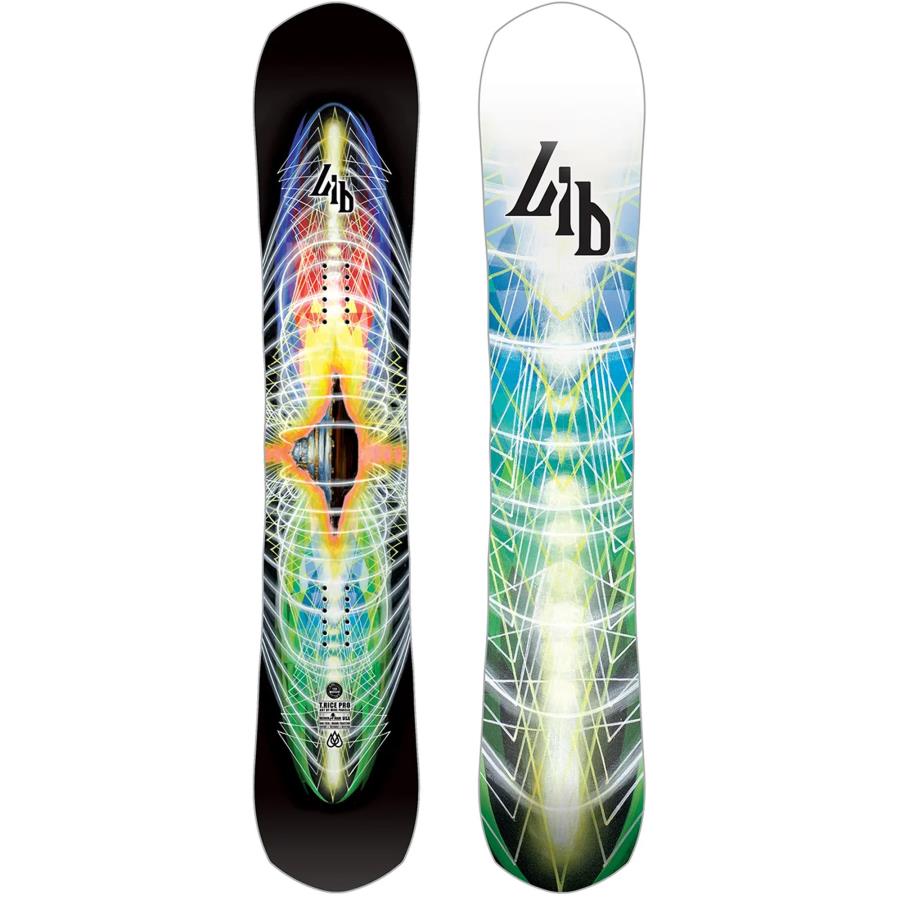
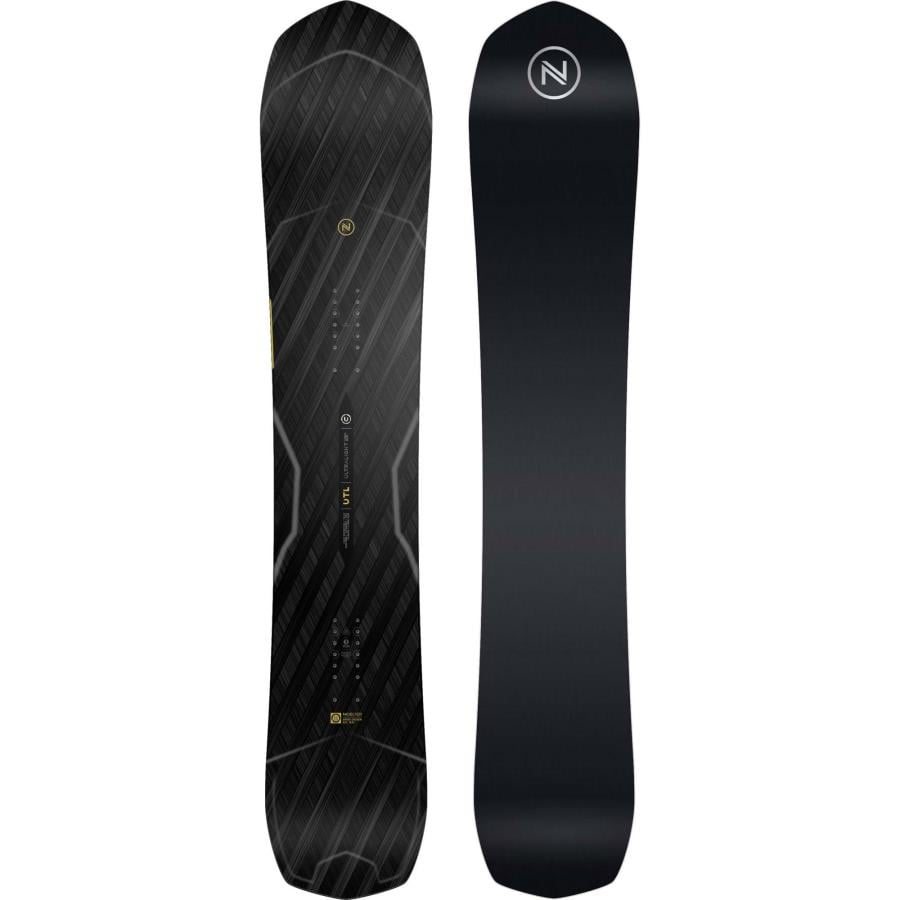
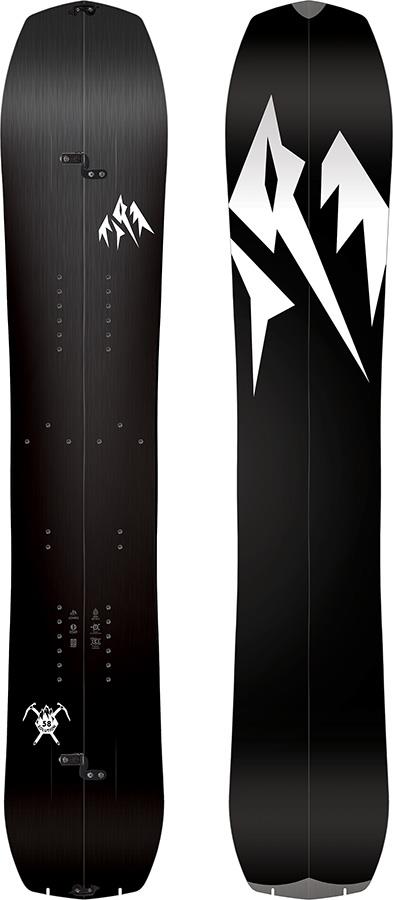
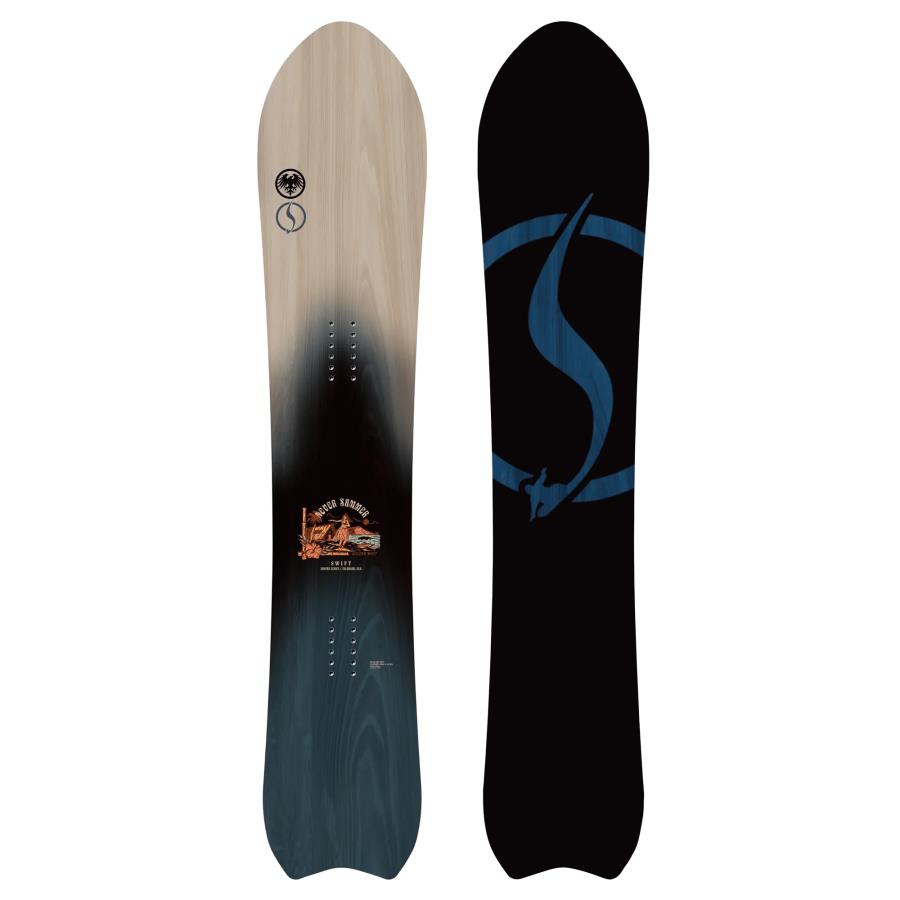
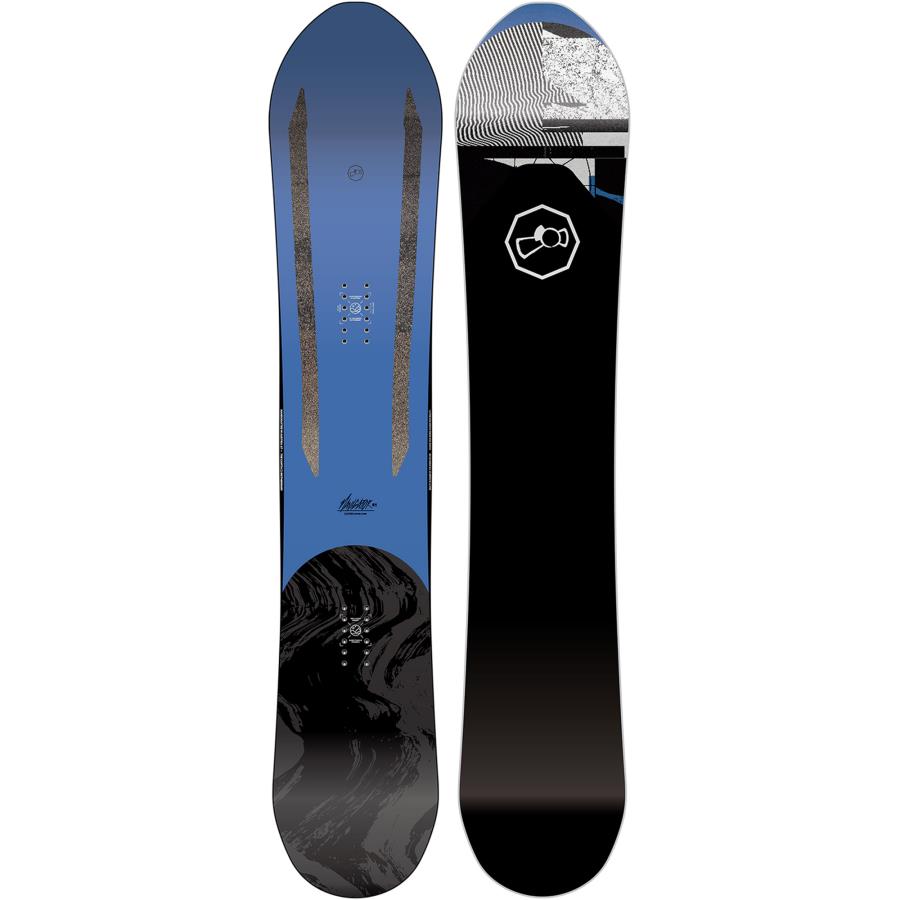


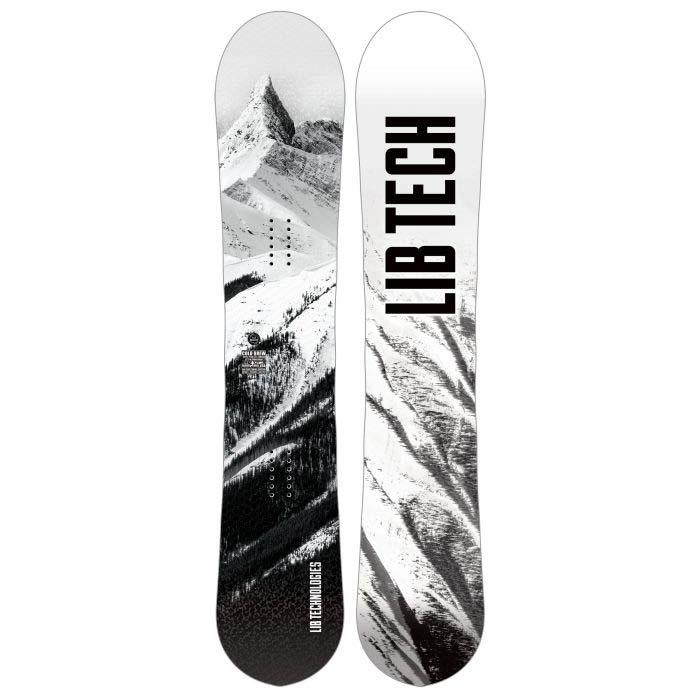
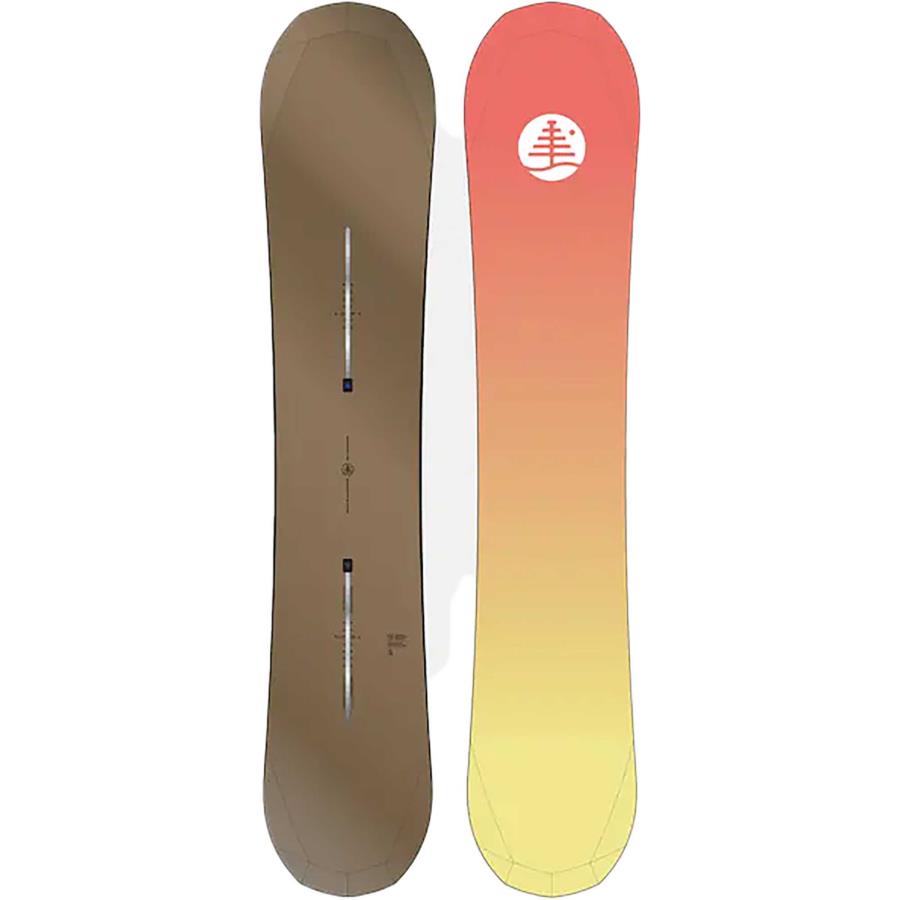
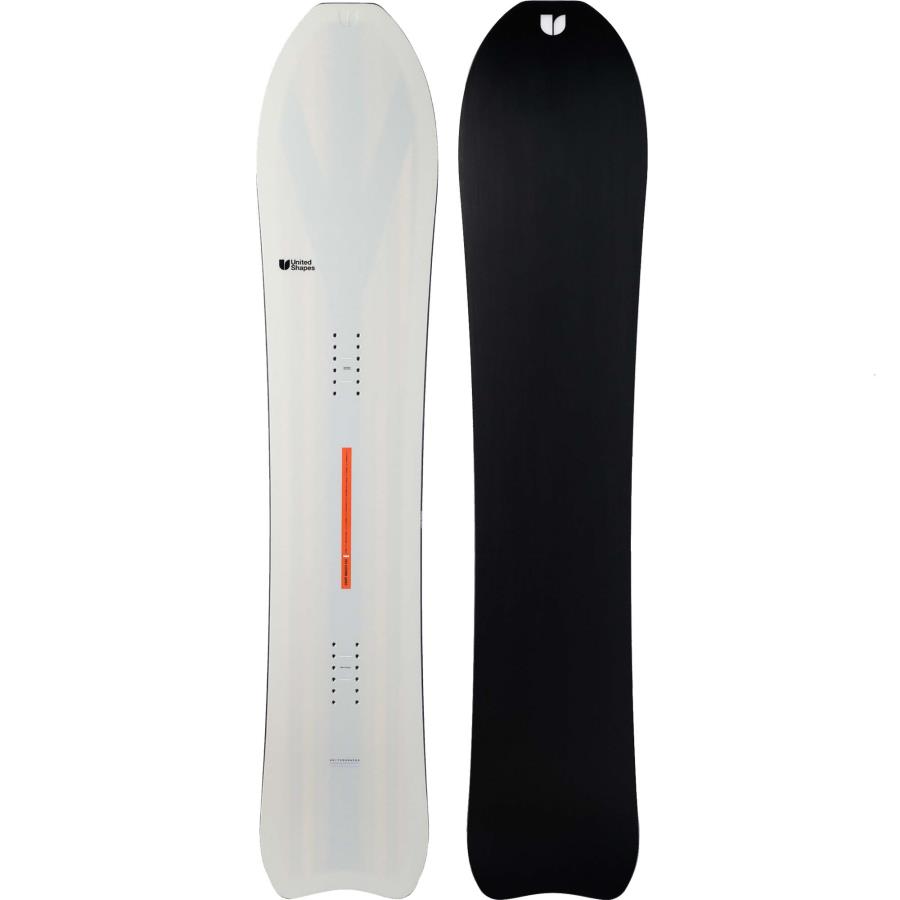
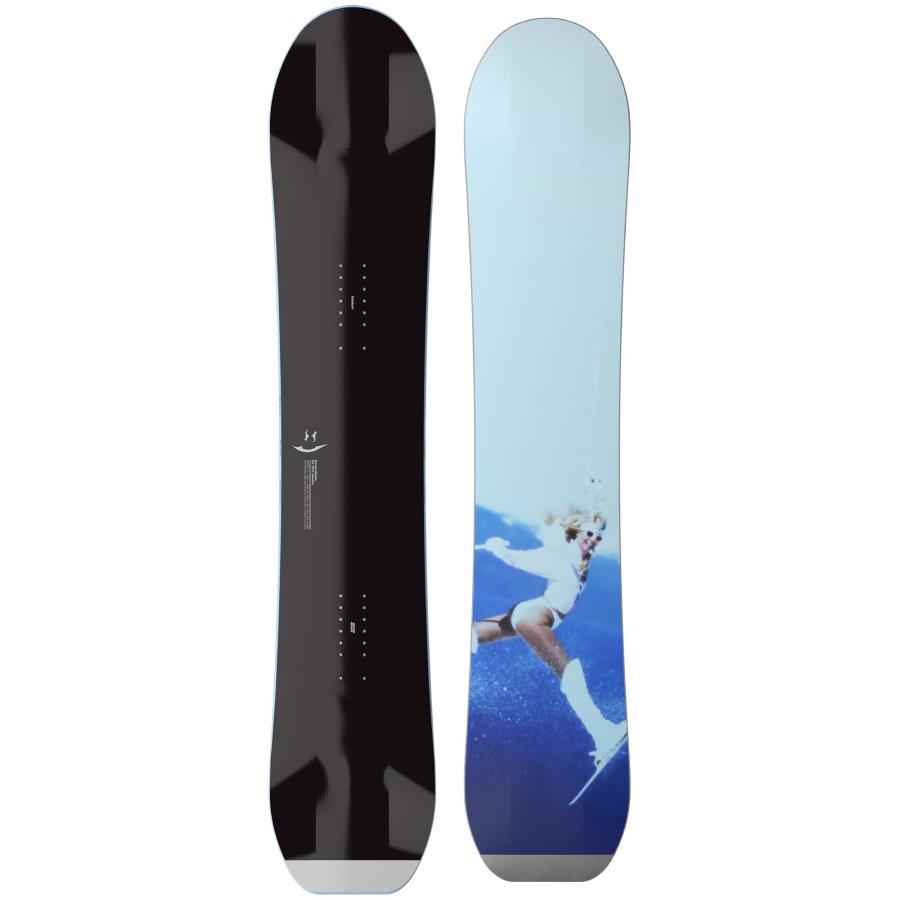

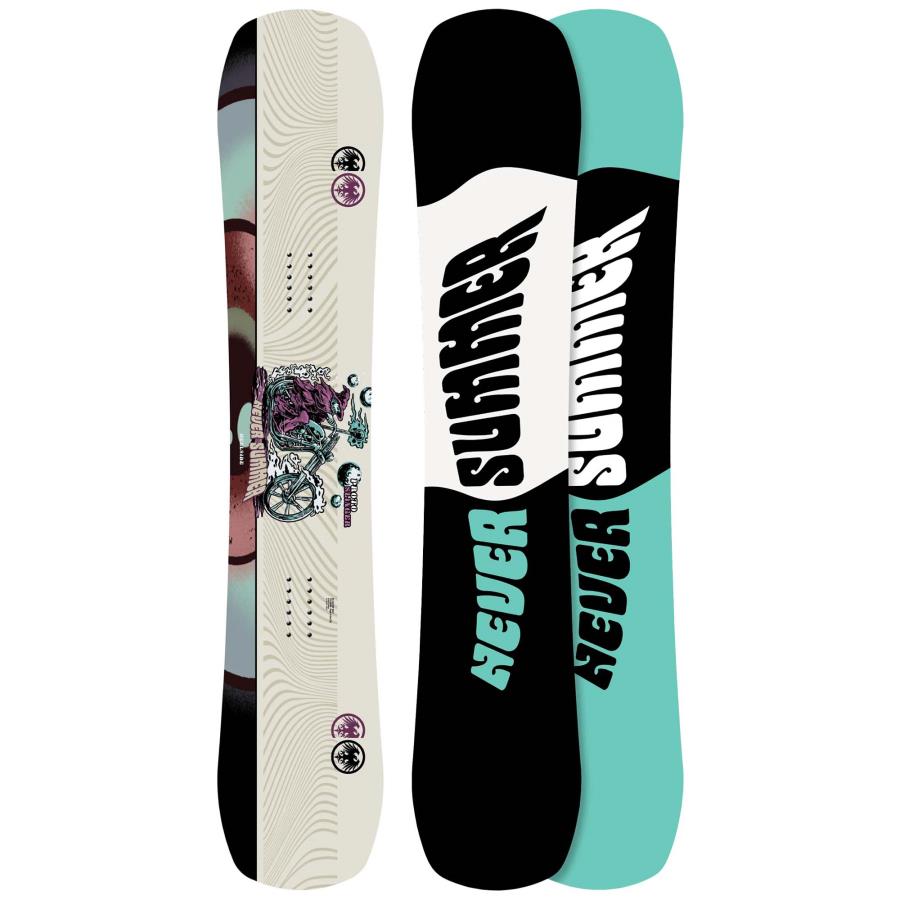

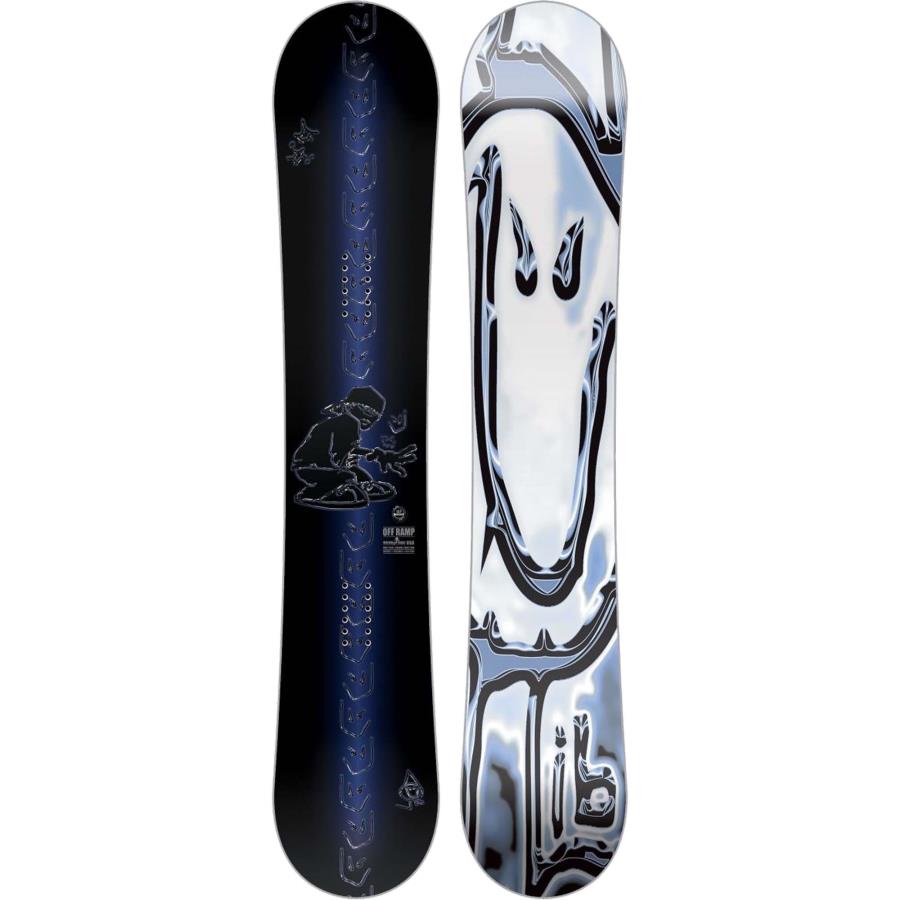
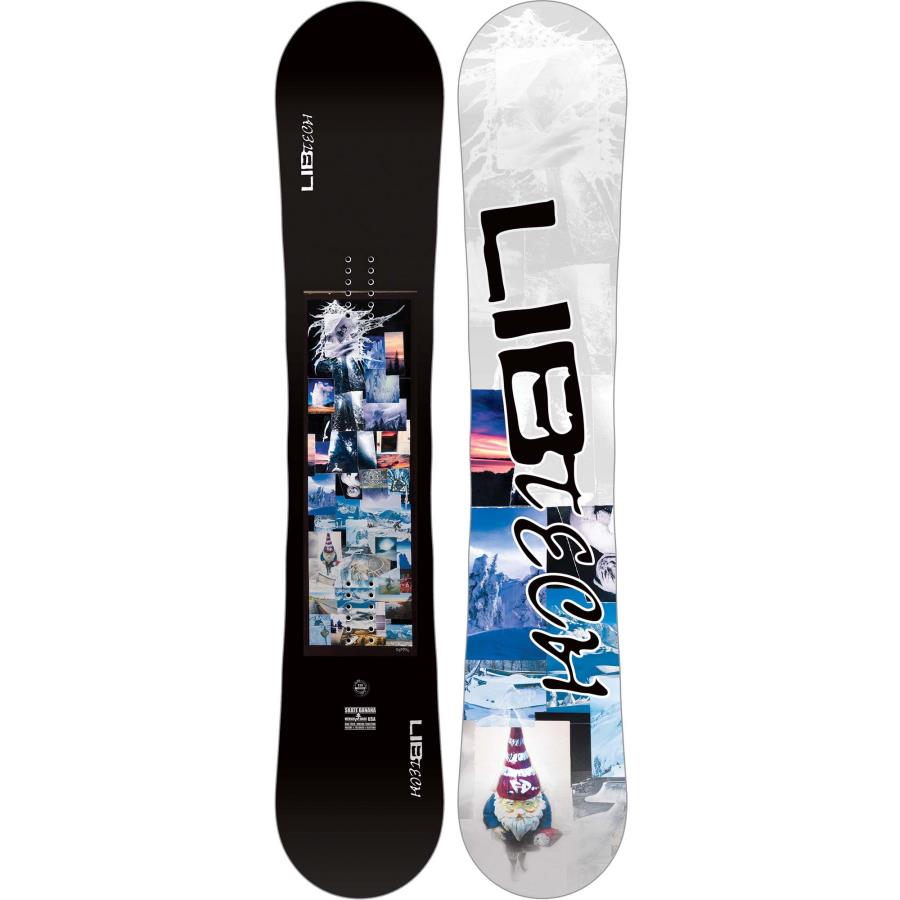

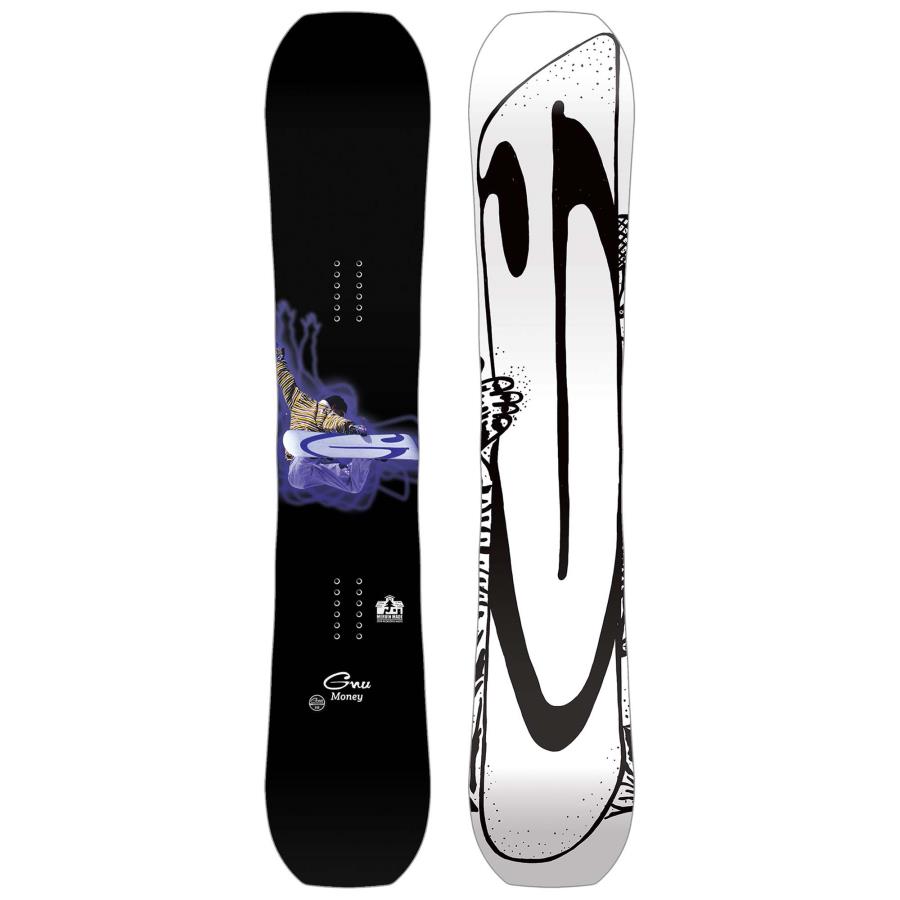

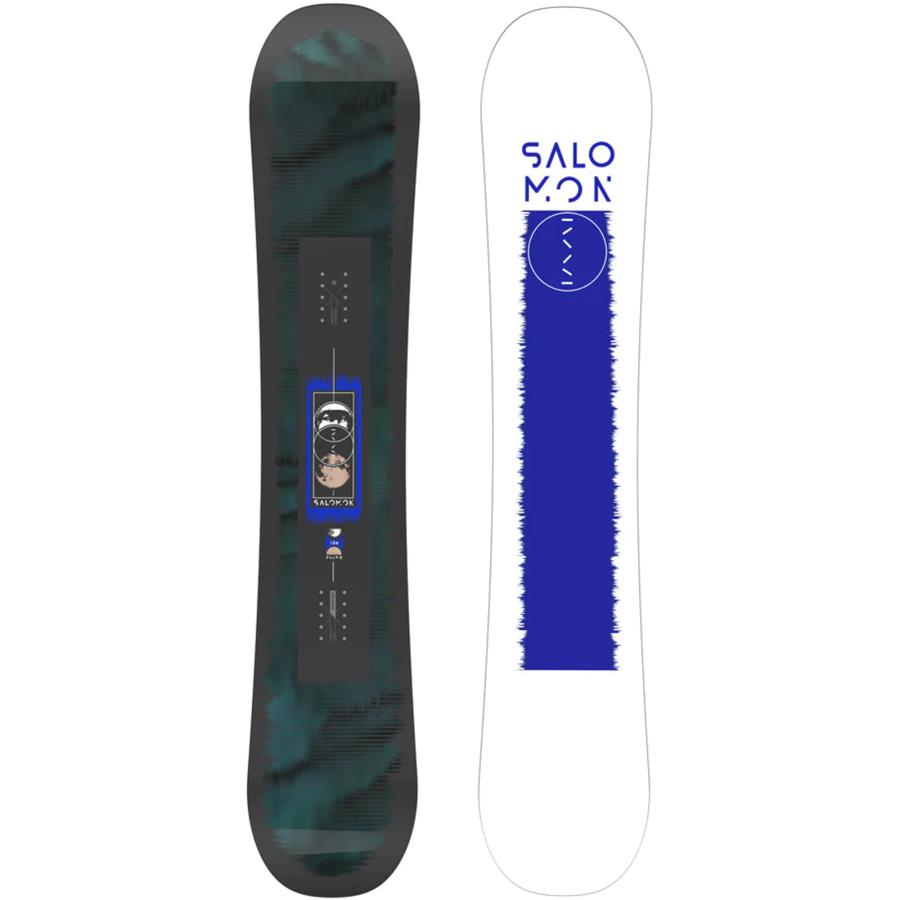
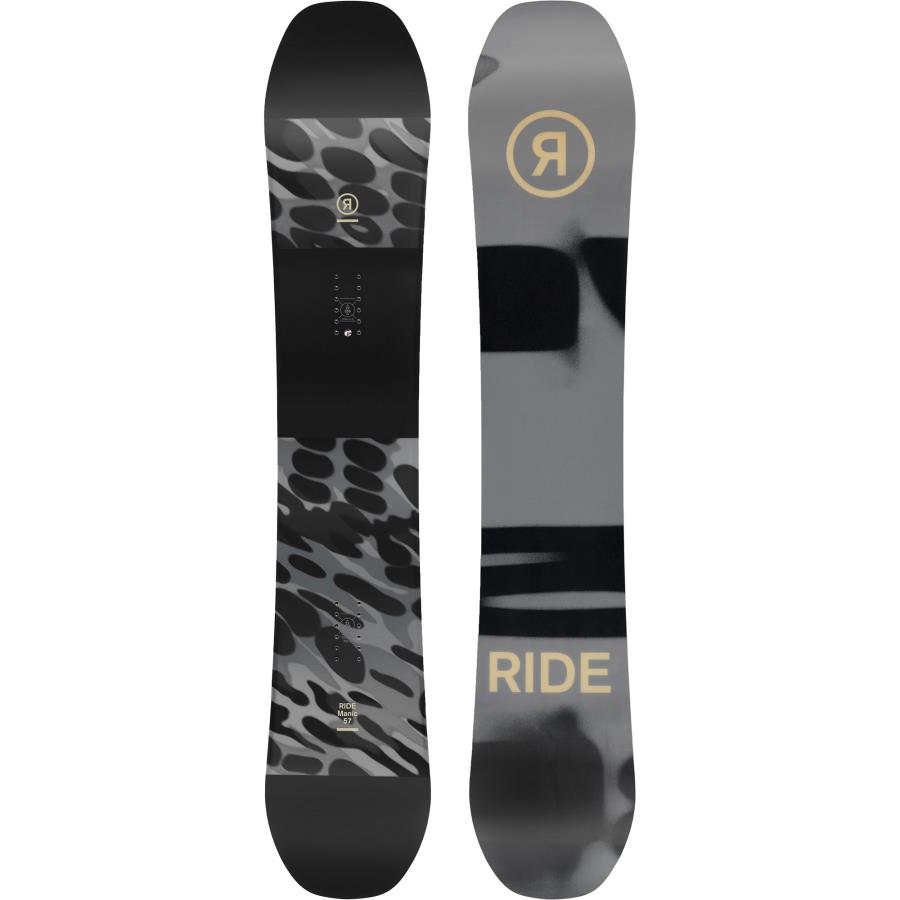

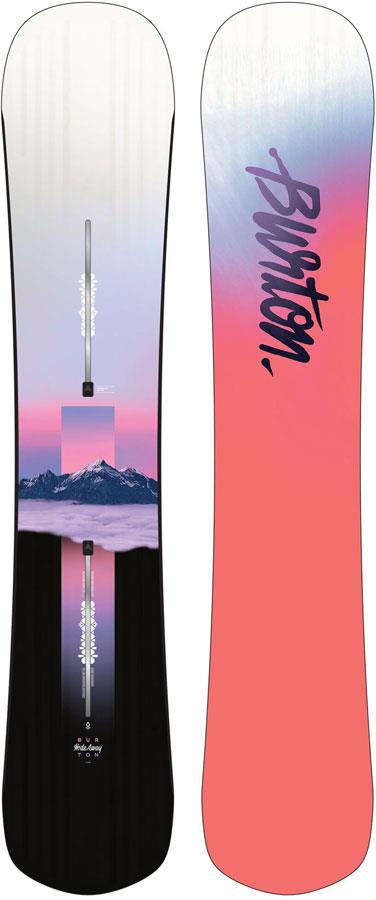
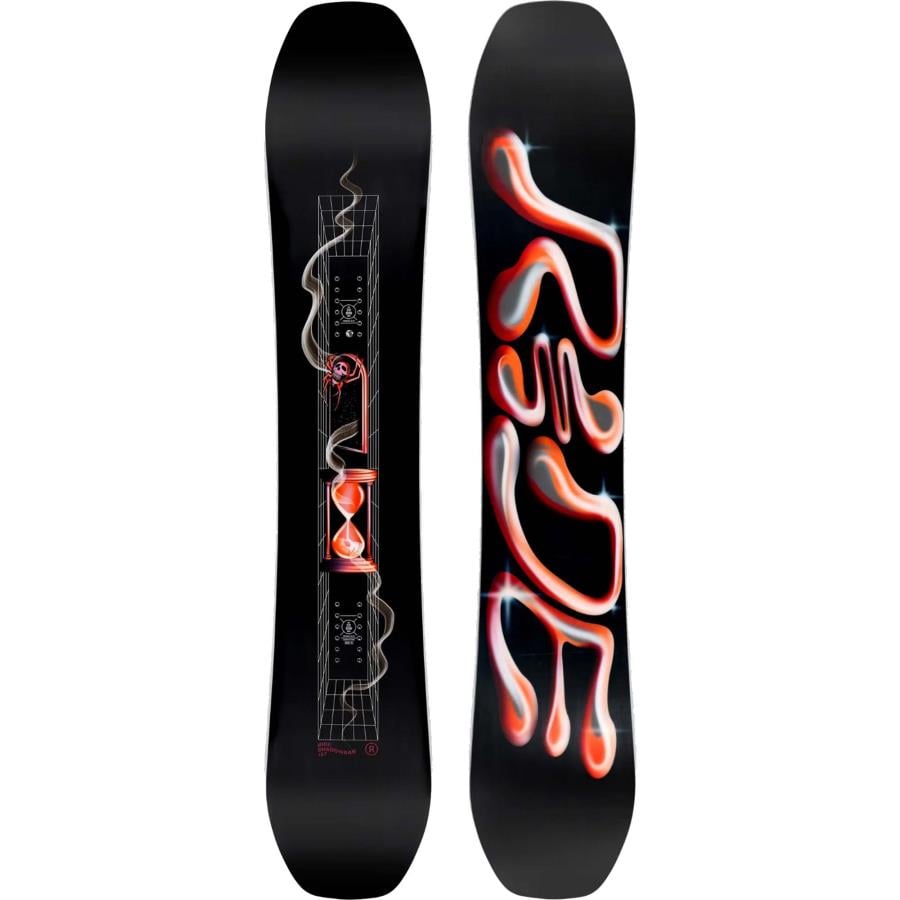
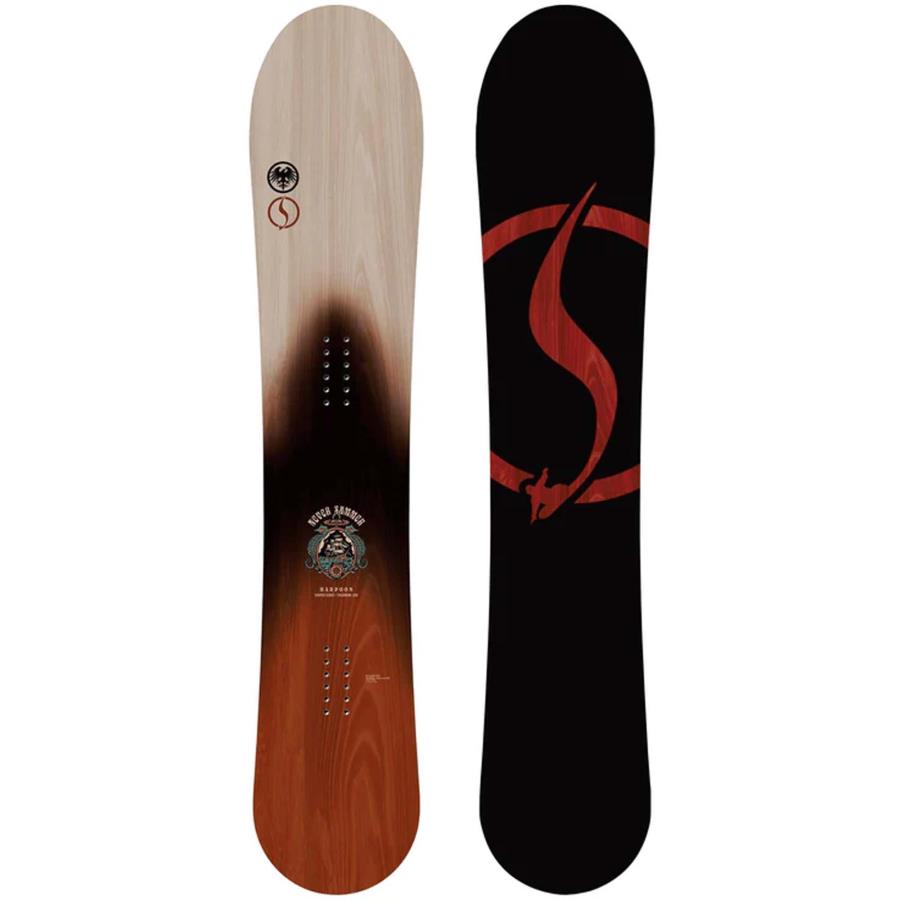
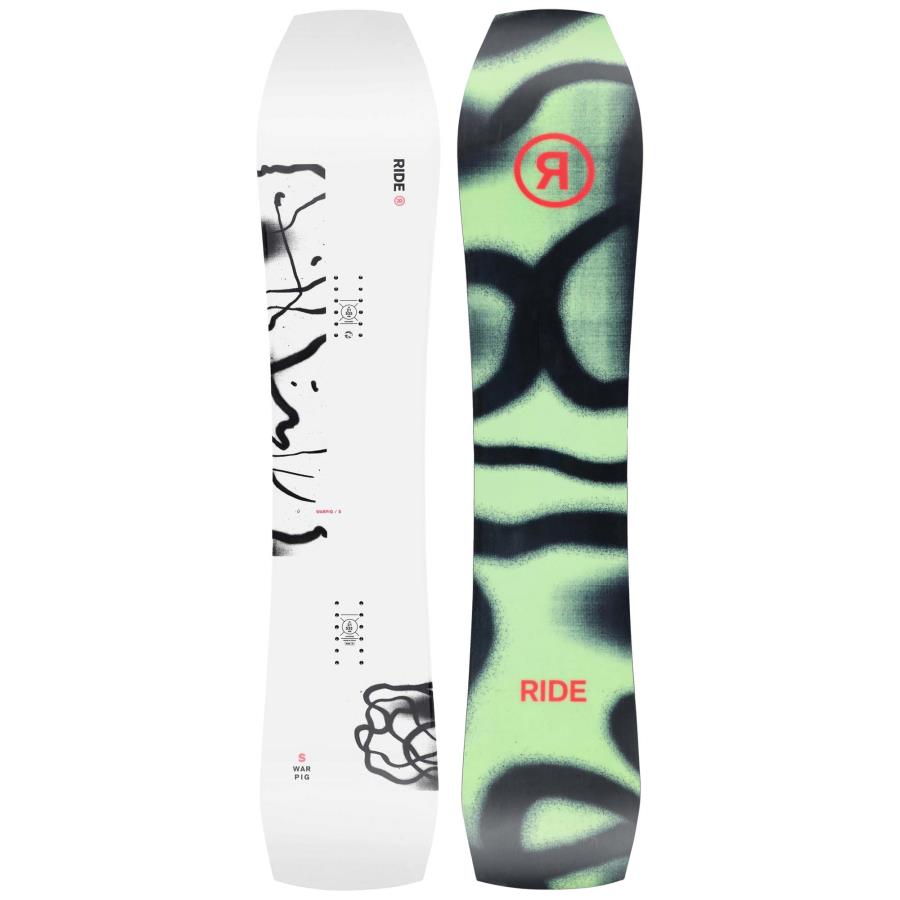
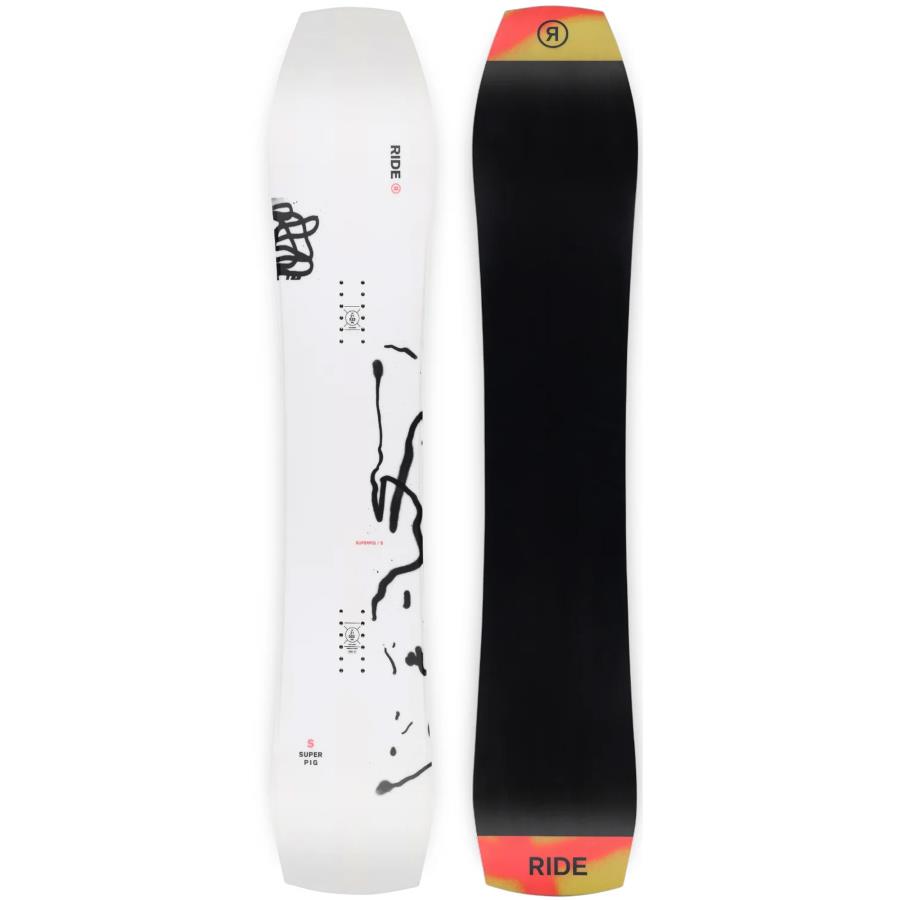
.jpg)
